Name: Zwitzh
Location: Copenhagen, Denmark
Occupation: Street Artist
Room size: 6 m² (65 ft²)
Cost of setup: Almost free
Social media: Instagram
Hello! Tell us a bit about yourself
Hello, my name is Zwitzh, and I make street art.
This is my cosy (and secret) workspace. Here I prepare my pieces, write and draw. And take a nap in my armchair. :-)
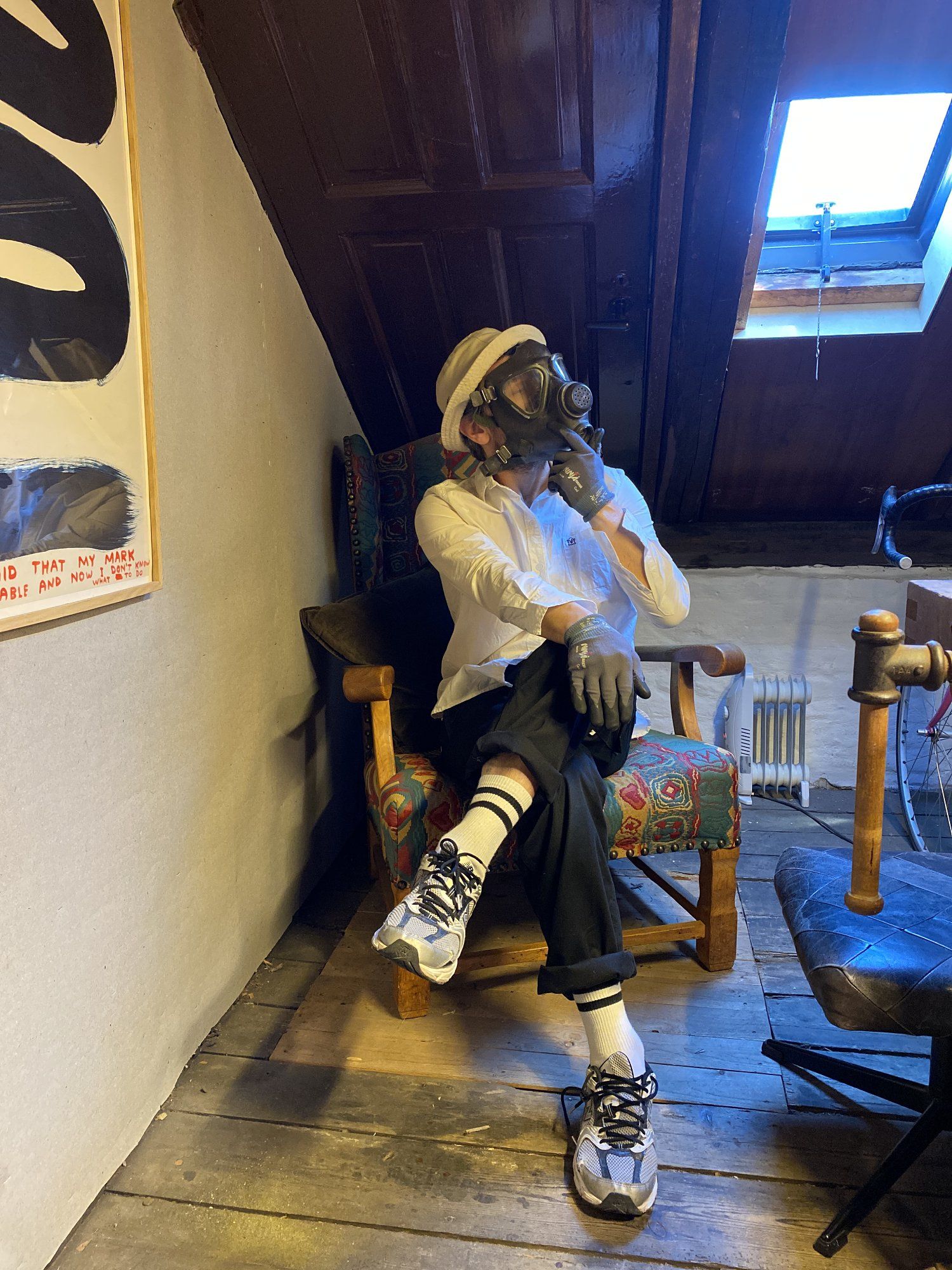
I set up switches and other electrical installations with texts on them in the tension field between the city’s graffiti and the endless municipal electrical installations.
The switches can be philosophical and existentialistic, but also time concepts and sometimes just thoughts. Anyway, things you can’t normally turn on or off.
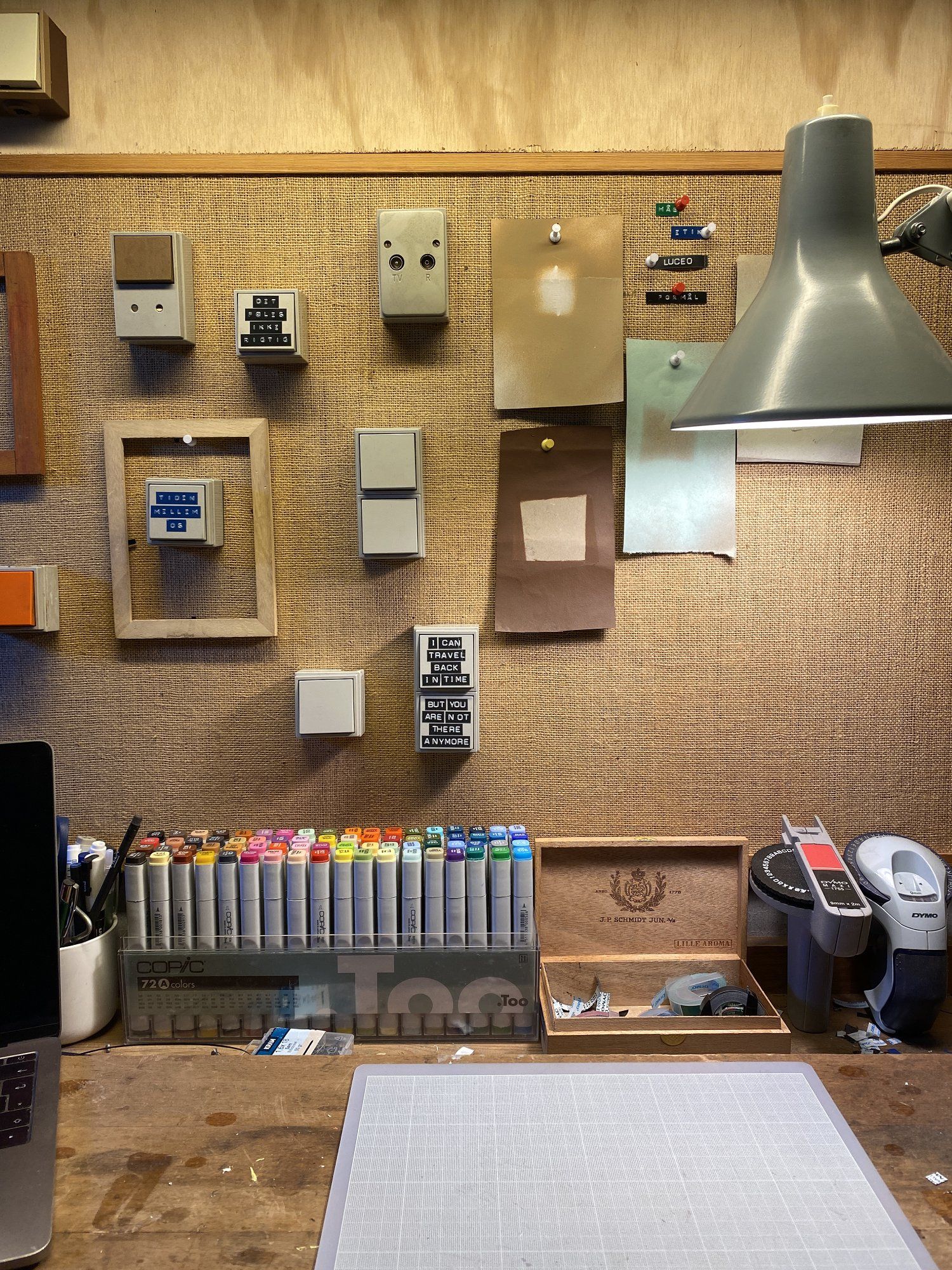
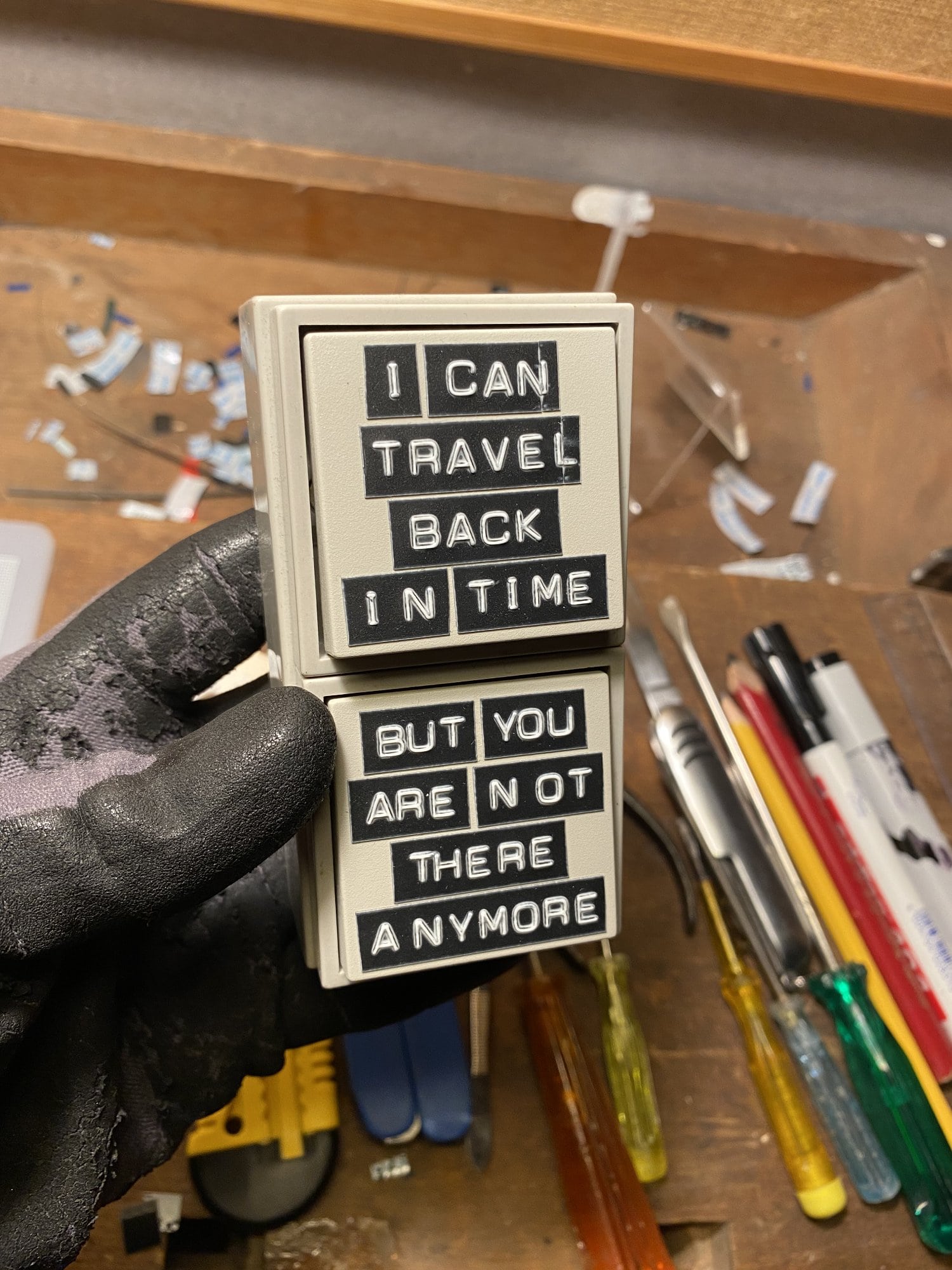
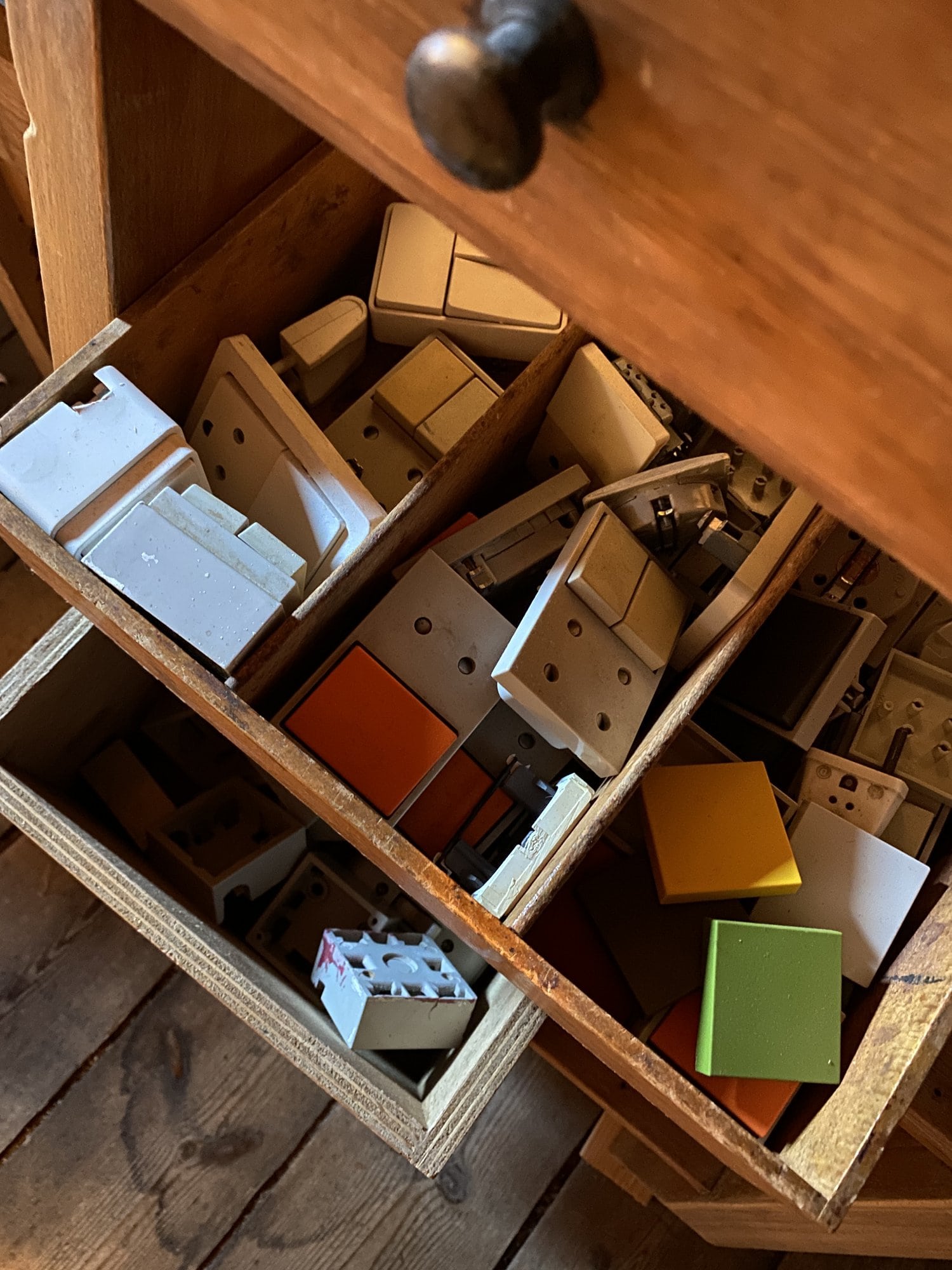
I have always drawn and written a lot which led me to the advertising industry.
And after a long series of fun and fast-paced years in huge, white-painted, overlit and over-decorated offices surrounded by glittering, pretentious brands, chasing the latest new trend, the desire arose to get out into the street and just breathe calmly again.
And to have my own little workspace.
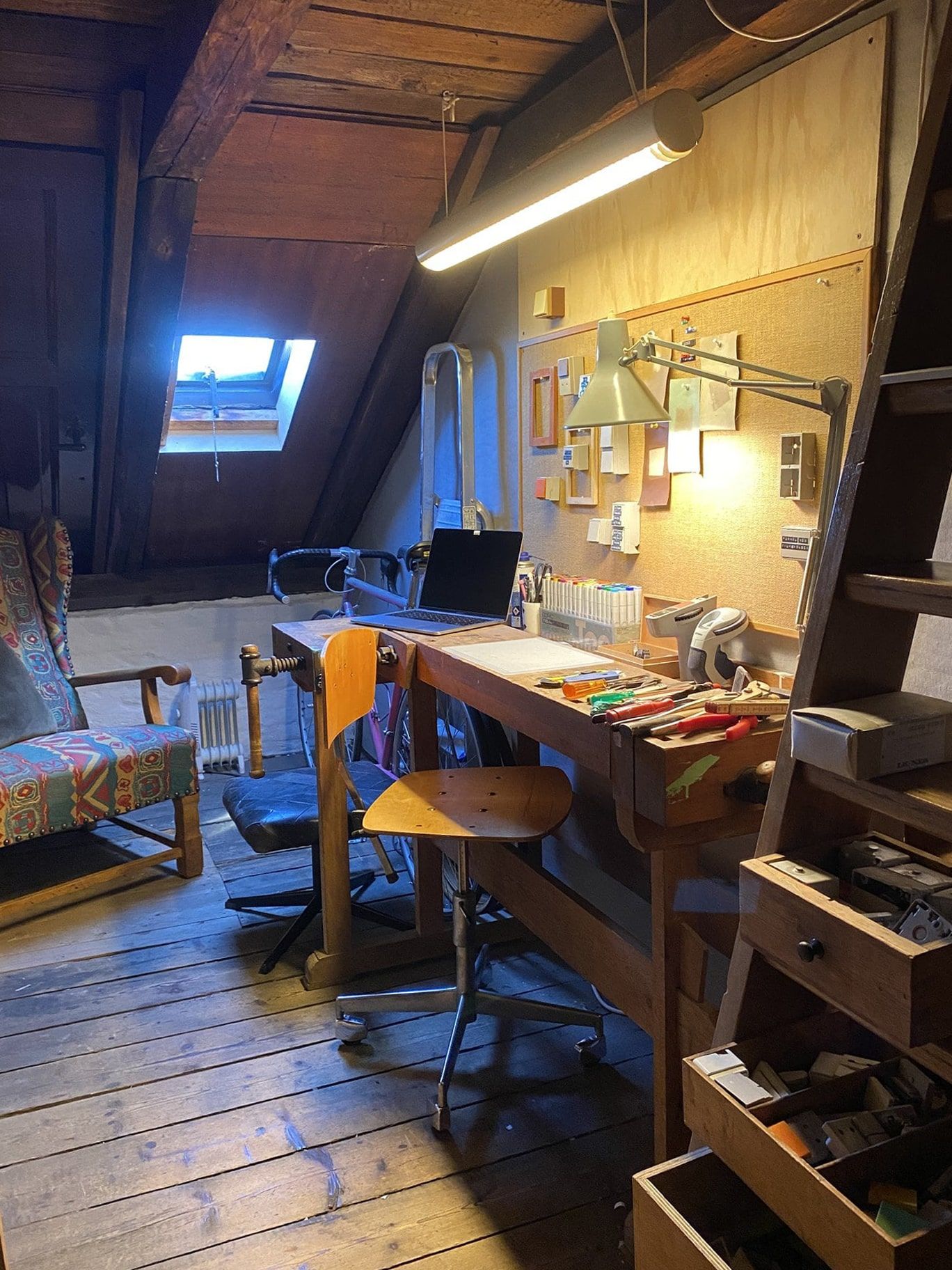
With all the abundance of lifestyle, consumer mentality and almost nauseating availability of everything, I kind of needed to feel lucky again.
That’s the feeling my workspace gives me.
That I am lucky.
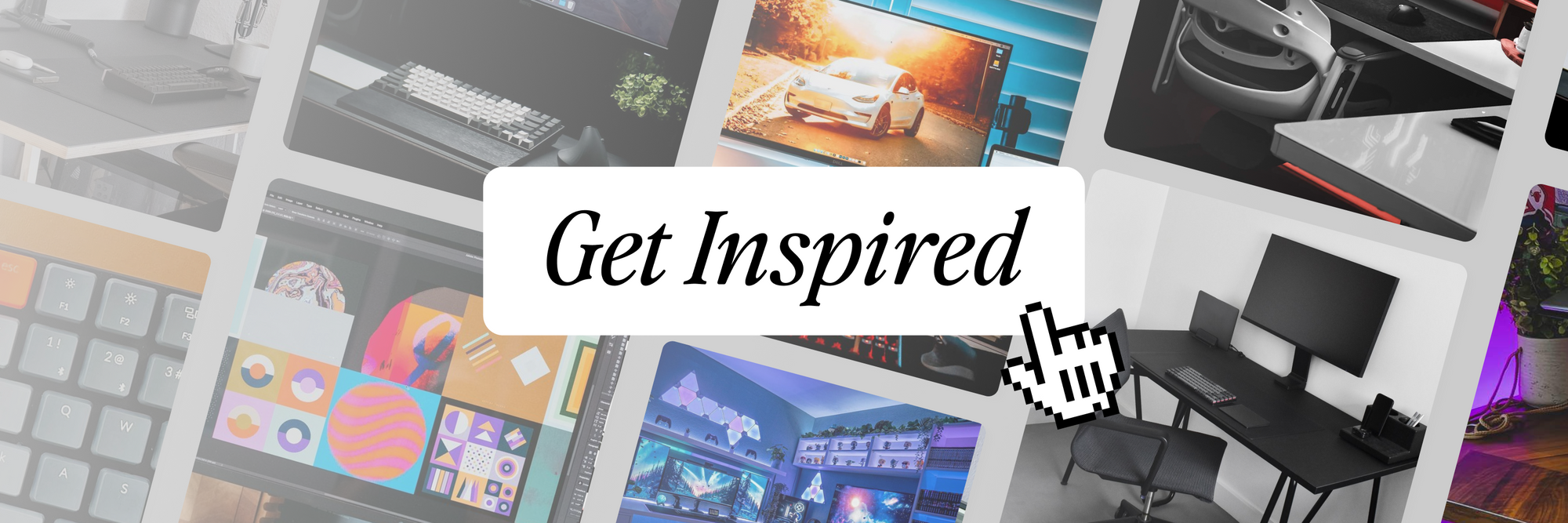
Take us through your setup
| Item | Model |
|---|---|
| Laptop | MacBook Pro 13″ 2.0 GHz 8 GB 256 GB, 2016 |
| Tablet | Apple iPad Pro 12,9¨ Wi-Fi 64 GB, 2017 and Apple Pencil, 2017 |
| Mobile phone | Apple iPhone 11 64 GB, 2019 |
| Label Makers | Second-hand Dymo Maxi 1755, 1980s Dymo Omega Embosser |
| Desk | Second-hand carpenters bench 1980s |
| Chair | Second-hand Labofa work chair 1970s |
| Lamp | Second-hand DEMKO architect lamp from the 1970s. Demko = Danmarks Elektriske Materiel Kontrol (Denmark’s Electrical Material Control). For many years, the Danish state controlled and produced several affordable, very high-quality, no-name electric appliances. |
My workspace is on the sixth floor in the attic of a large apartment building from 1885, where we also live on the first floor.
I was lucky enough to have an old, forgotten room handed over from a previous resident.
The rooms behind the dark corridors are neither insulated nor have electricity.
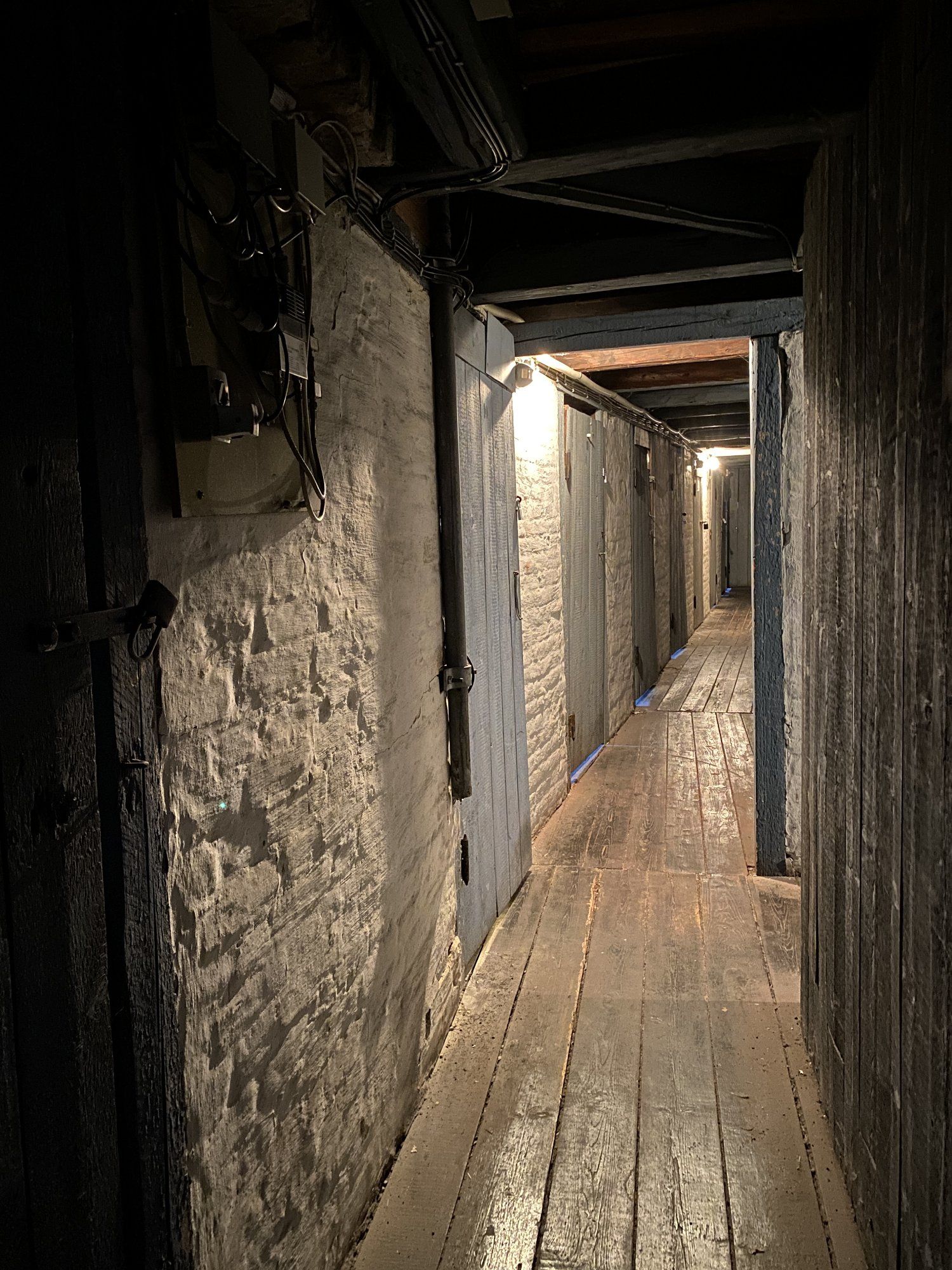
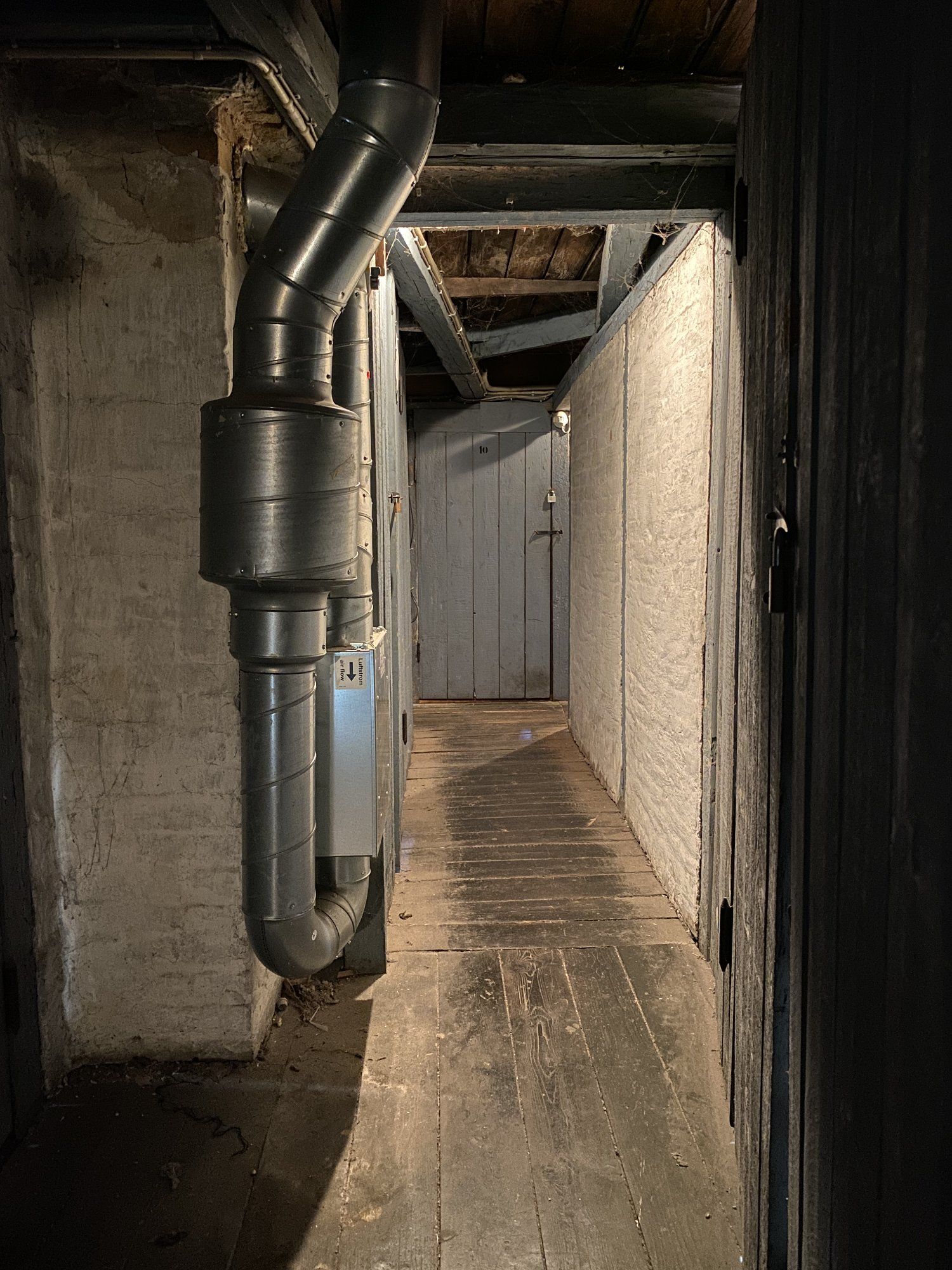
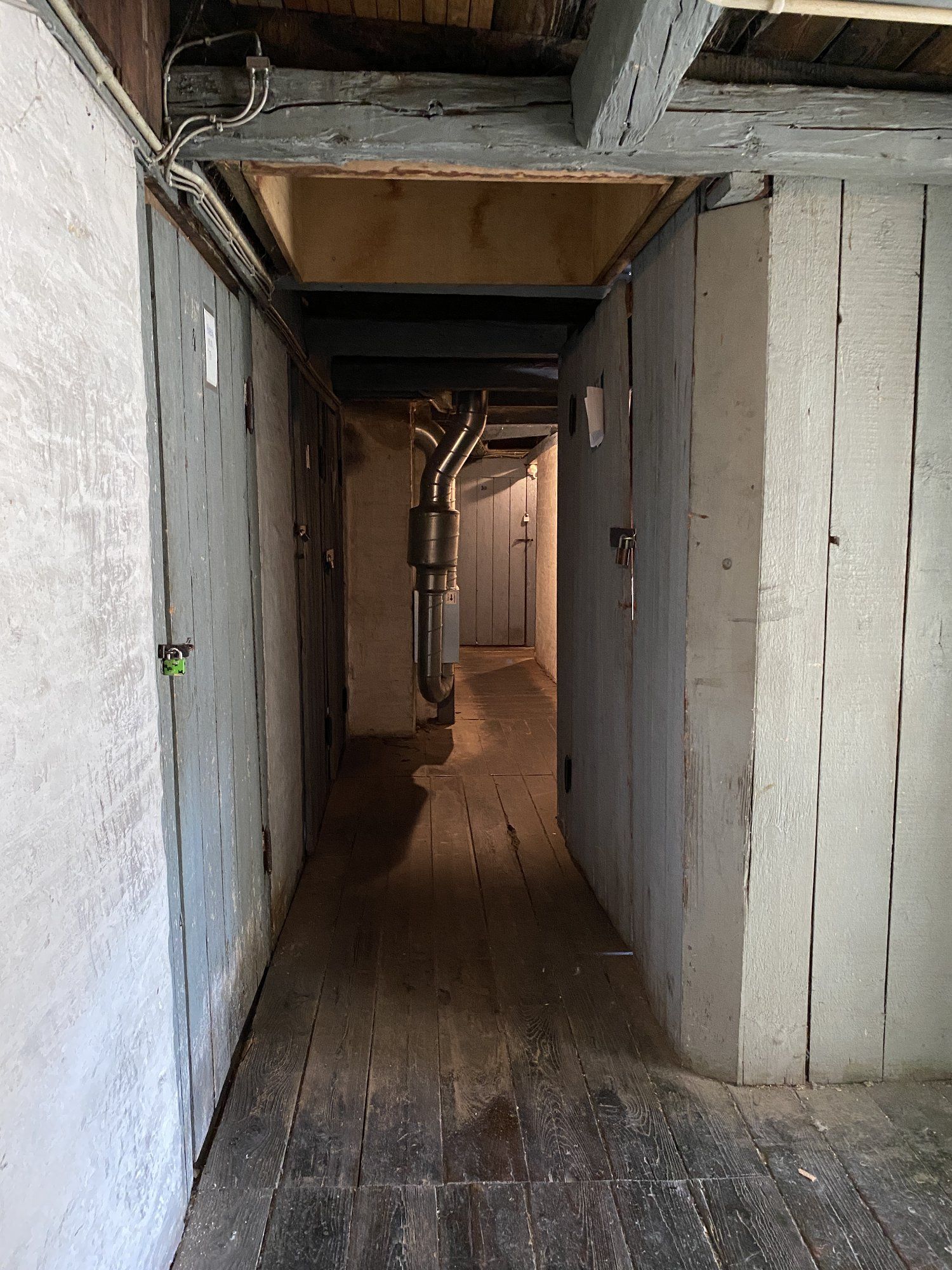
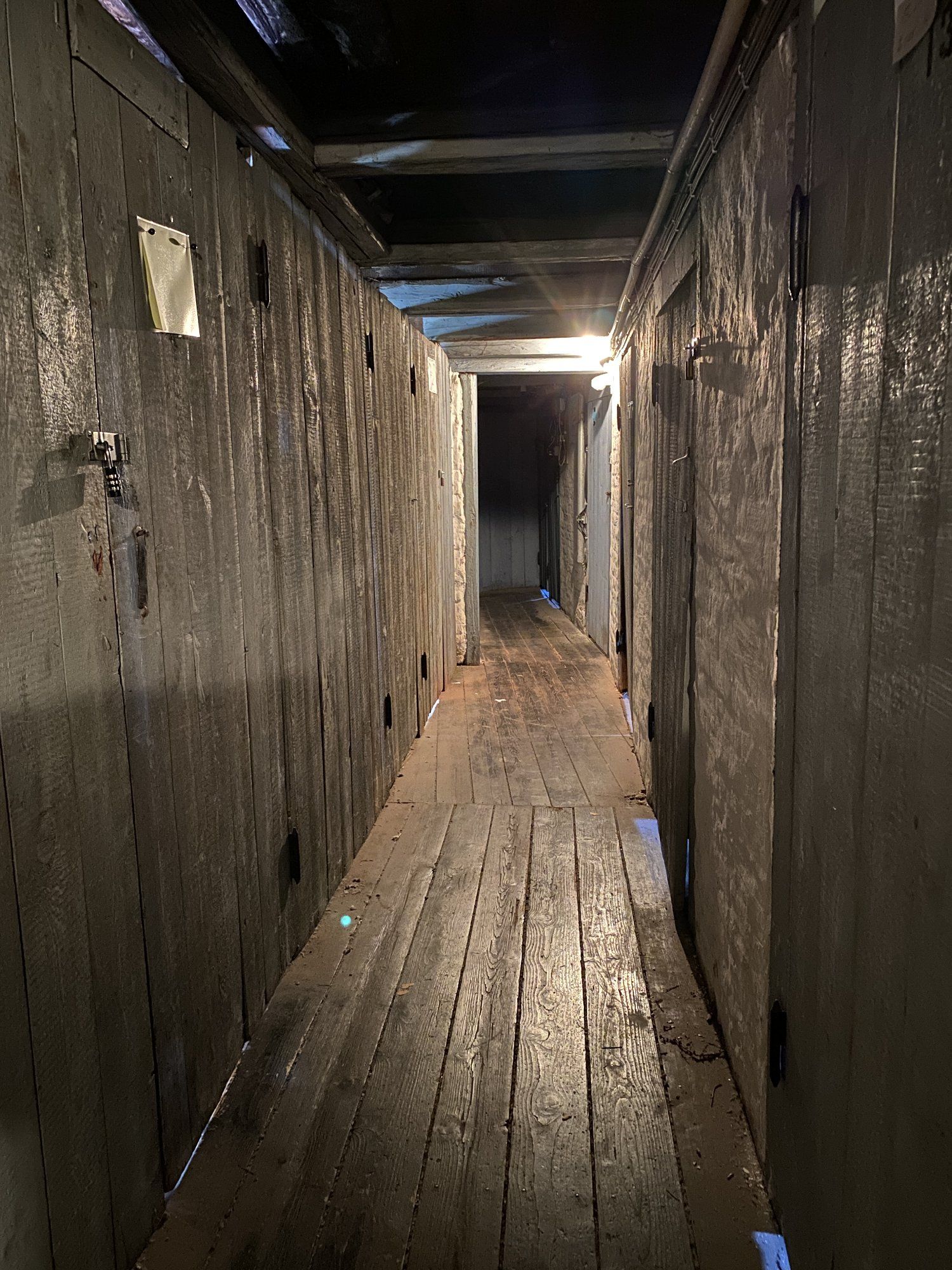
The room was completely bare, with walls of rough wooden planks and holes directly out into the open.
But it was love at first sight.
Since it is illegal to use the attic for anything other than light storage, the first thing I did was to make it invisible.
Completely close it off from the outside world with boards and insulation (and a faux padlock, so it appears locked when I’m inside).
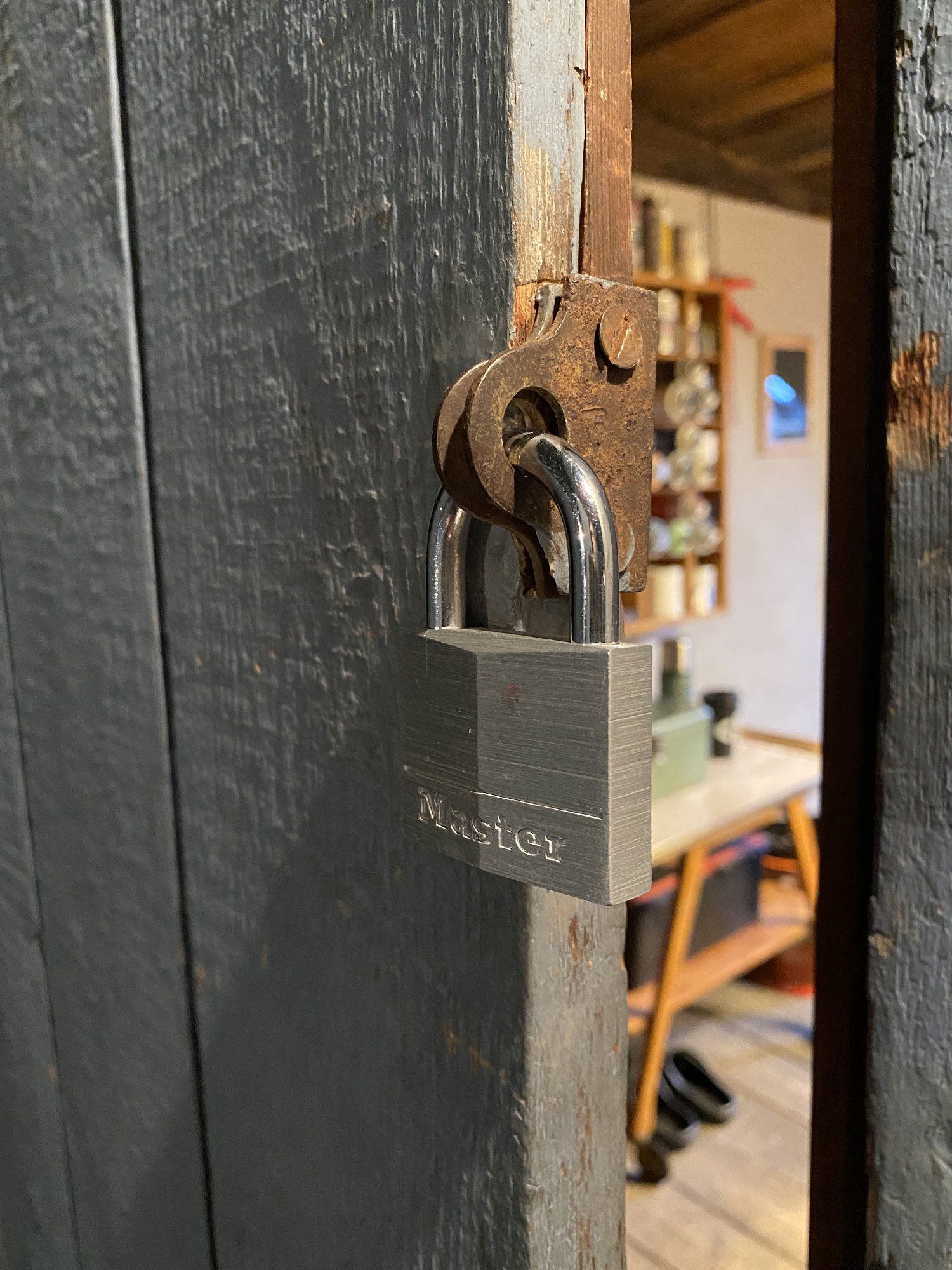
After that, I connected electricity for light and heat from the power grid and started to set up my little secret hideaway.
Most things are something I’ve either bought second-hand, found in bulky waste, or given as a gift.
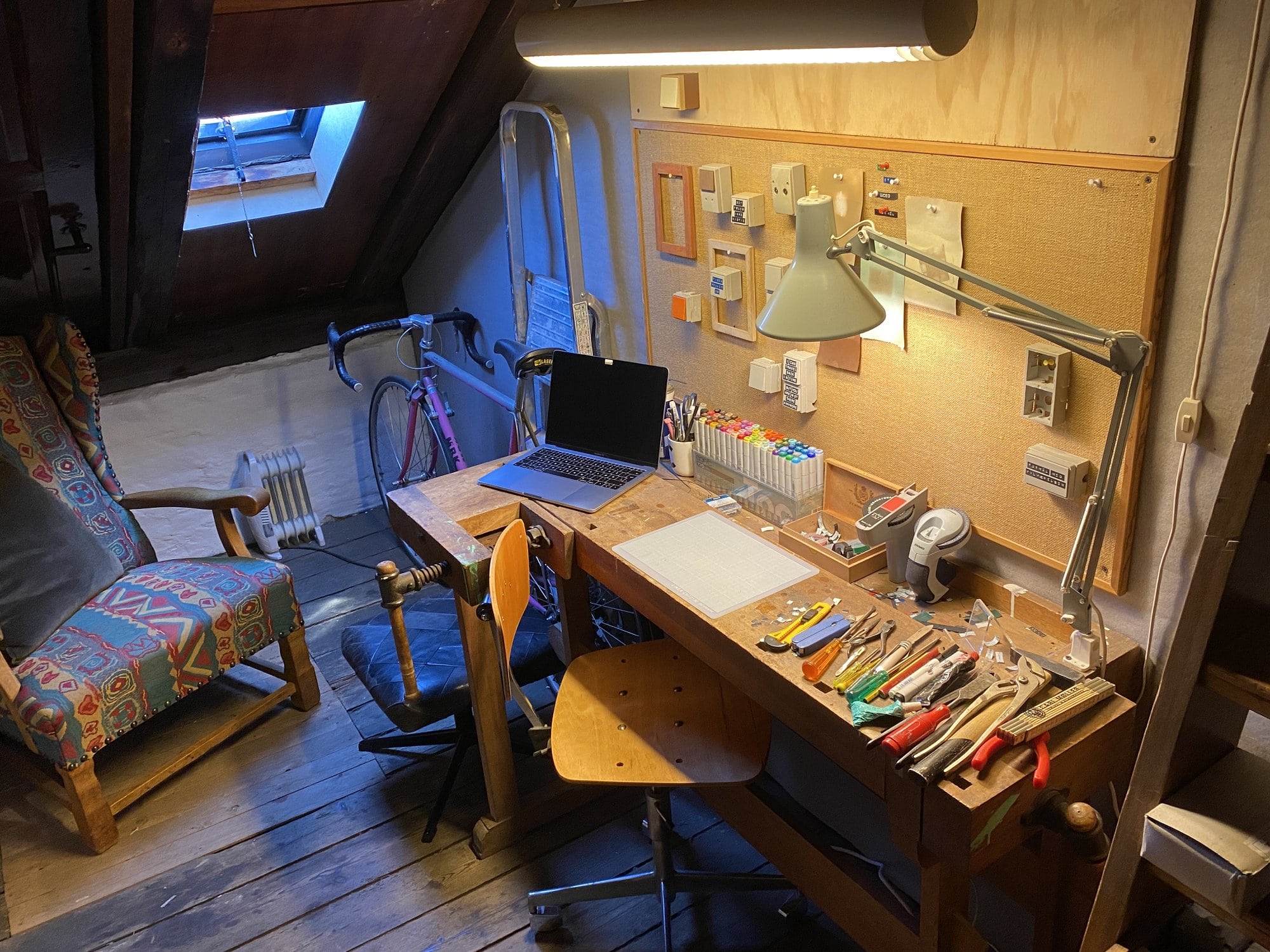
My desk is an old carpenter’s bench my wife bought for me from a carpenter who had to change workshops.
It smells amazing of old wood and is the coolest desk I have ever had.
I have never had a desk that smelled good before.
I found the office chair in the trash.
It is from the Danish chair factory Labofa (Larsen’s Bolt Factory) from the 1970s and is practically indestructible.
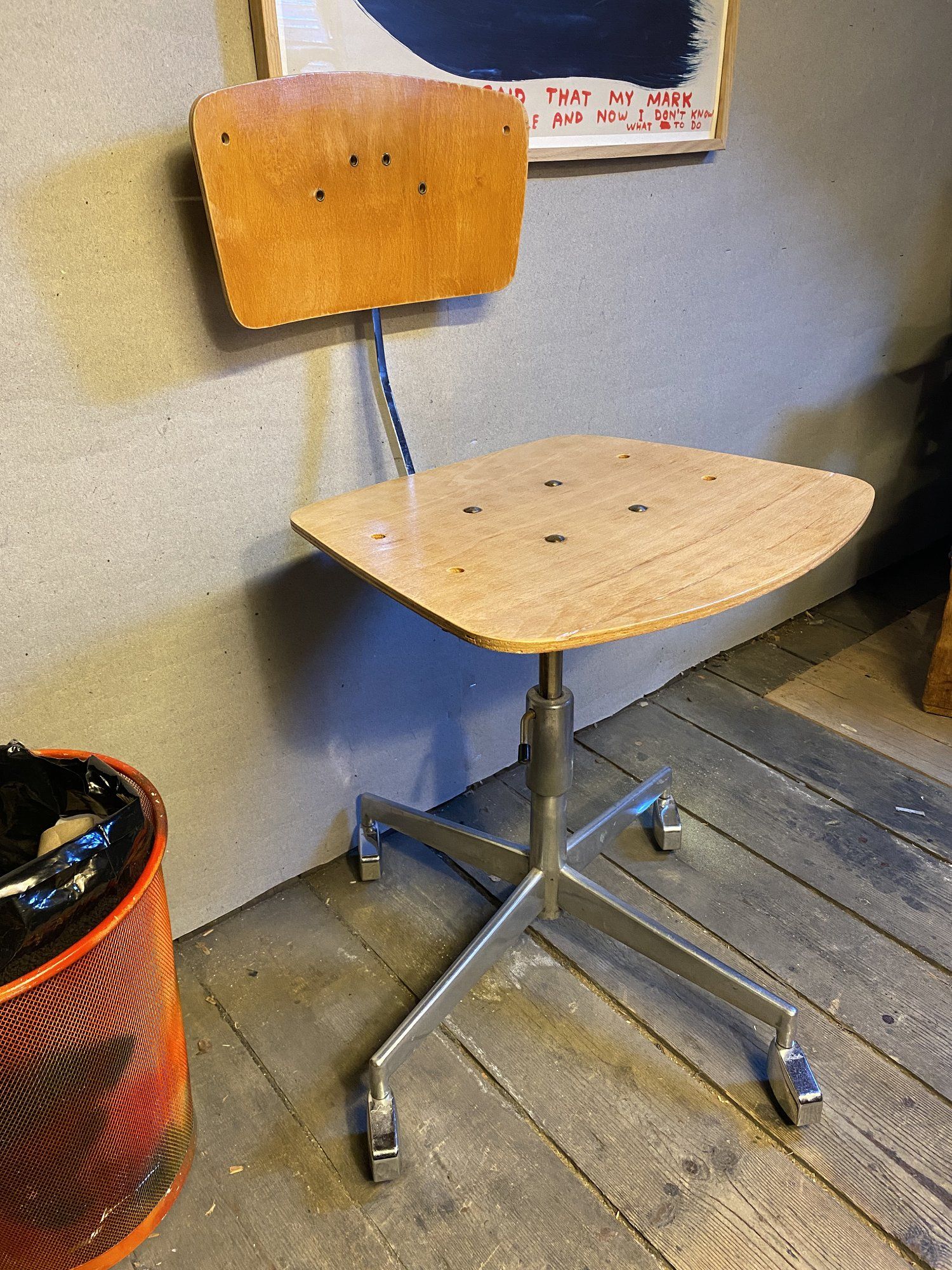
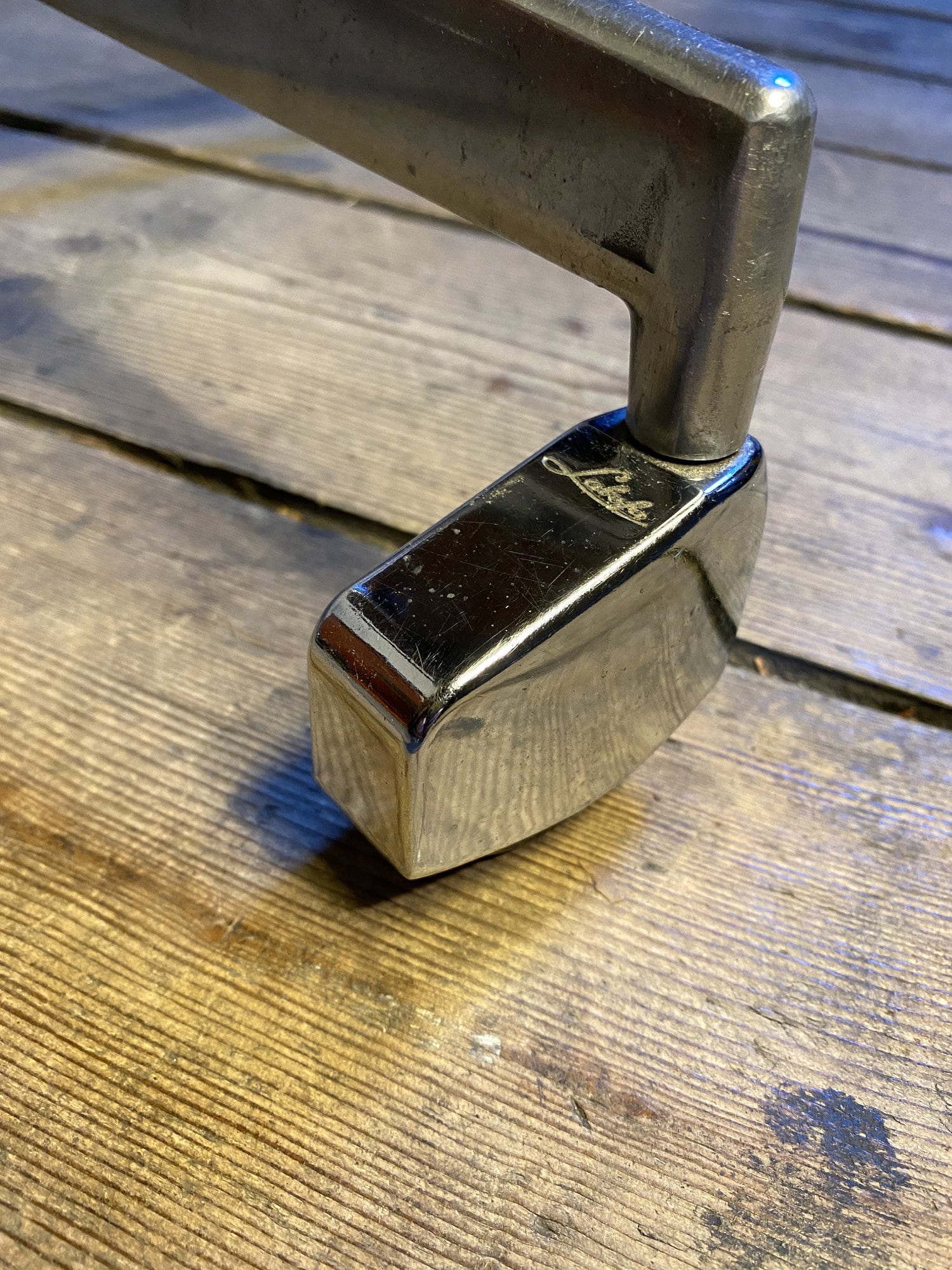
The hard casters have a very special sound on the plank floors.
I picked up the armchair for free from a lady who had inherited it. It is from the 1940s with a reupholstery from the beautiful but crazy pattern period of the 1990s.
It is heavy and soft and absolutely fantastic for a rest.
Sitting in it is like travelling back in time to a good ancestor holding you and reassuring you that everything is going to be alright.
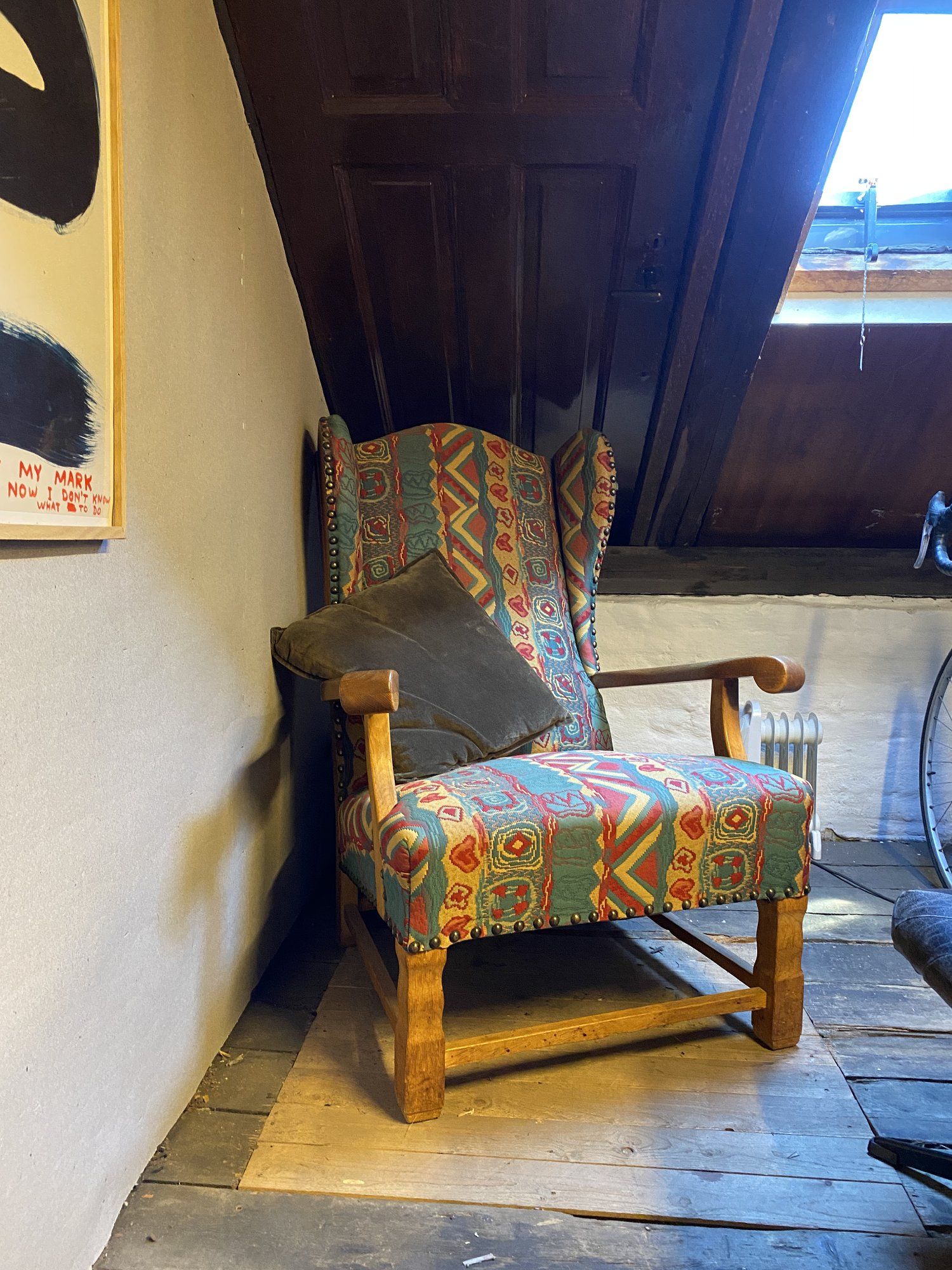
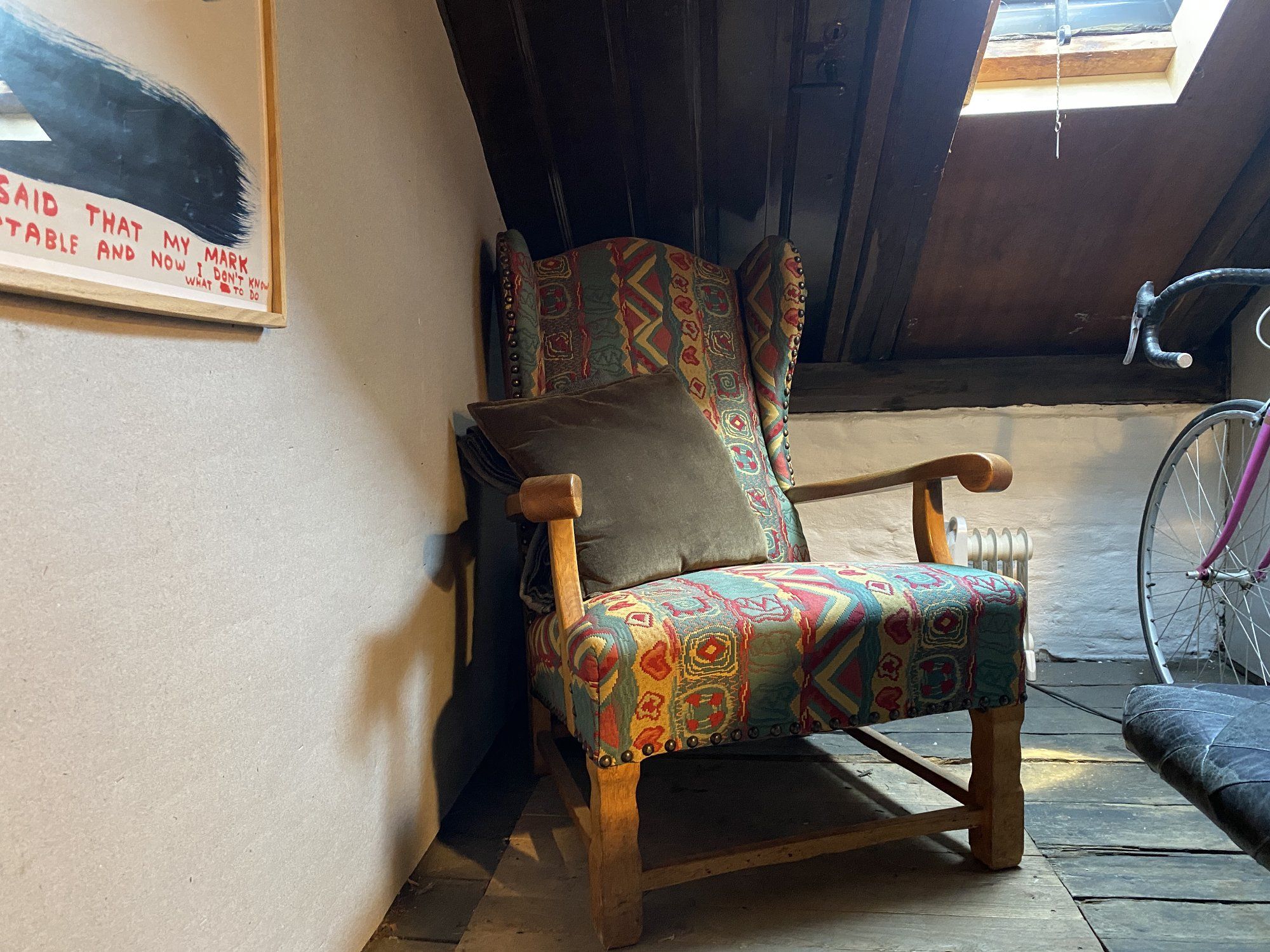
I got the jalousie cabinet with pull-out drawers and the wall shelf when I helped a good friend clear out a decedent’s estate in the neighbourhood.
There was, among a thousand other things, a huge wall shelf filled with old beautiful, refurbished typewriters. A museum bought many of the items.
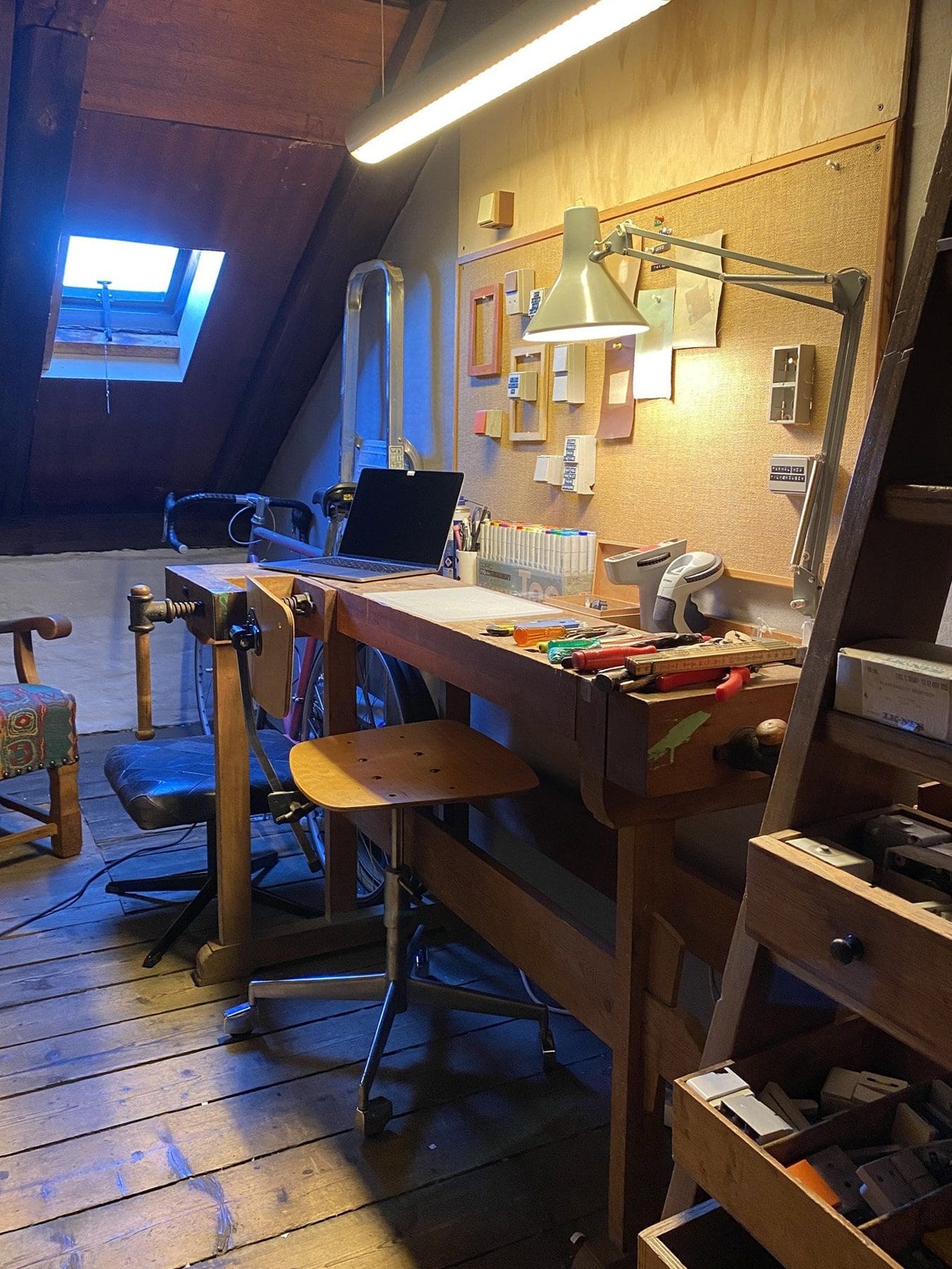
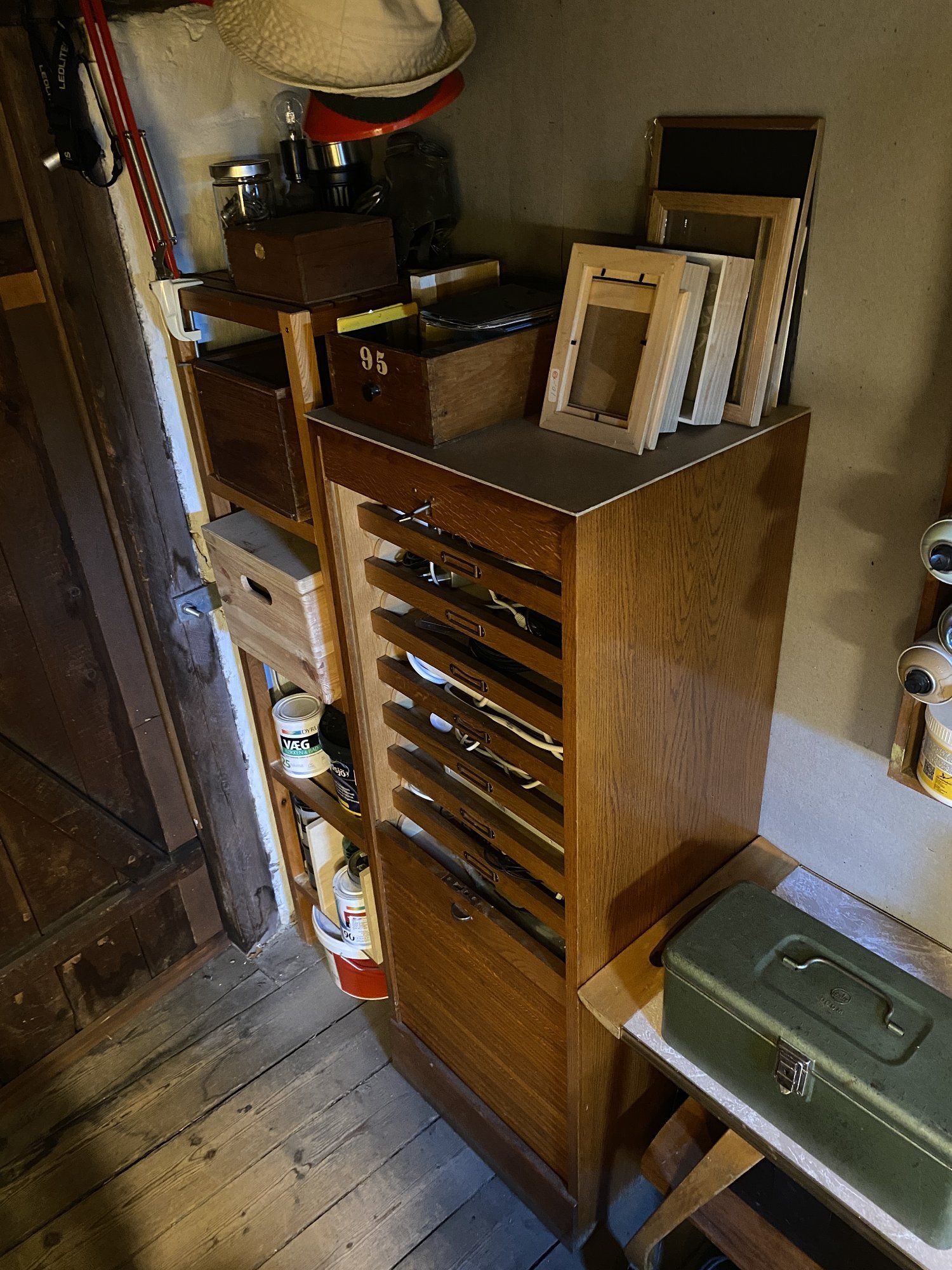
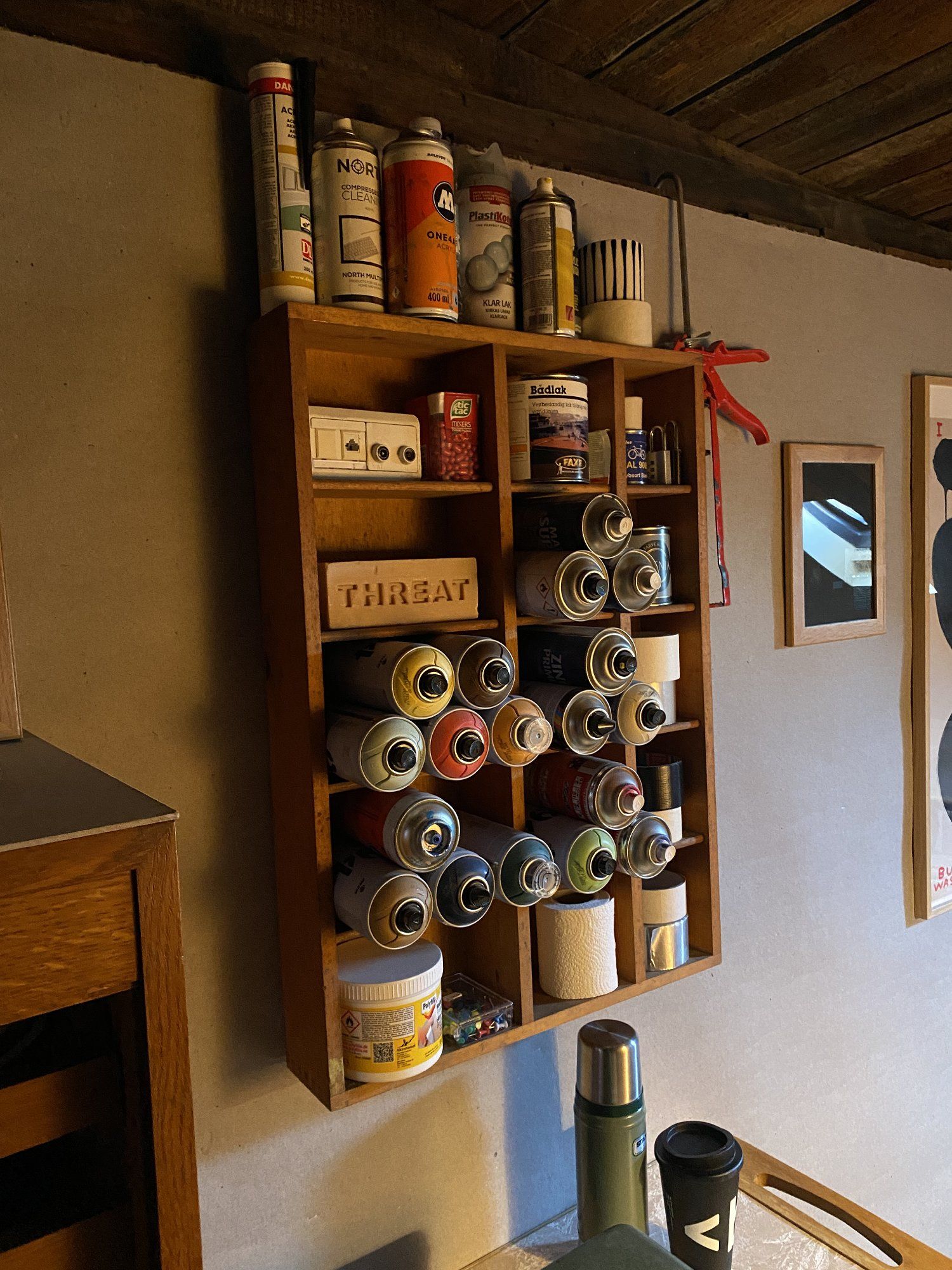
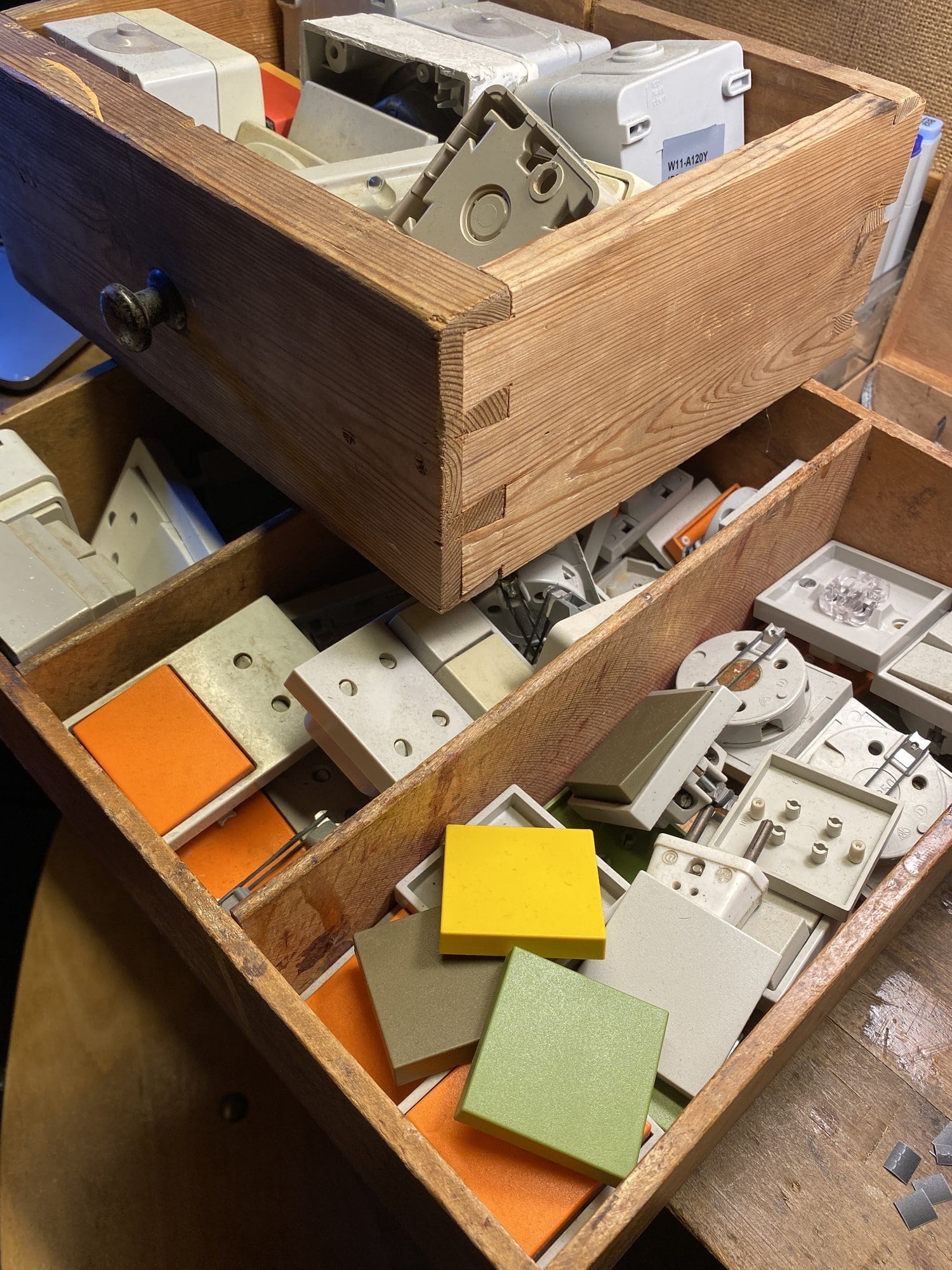
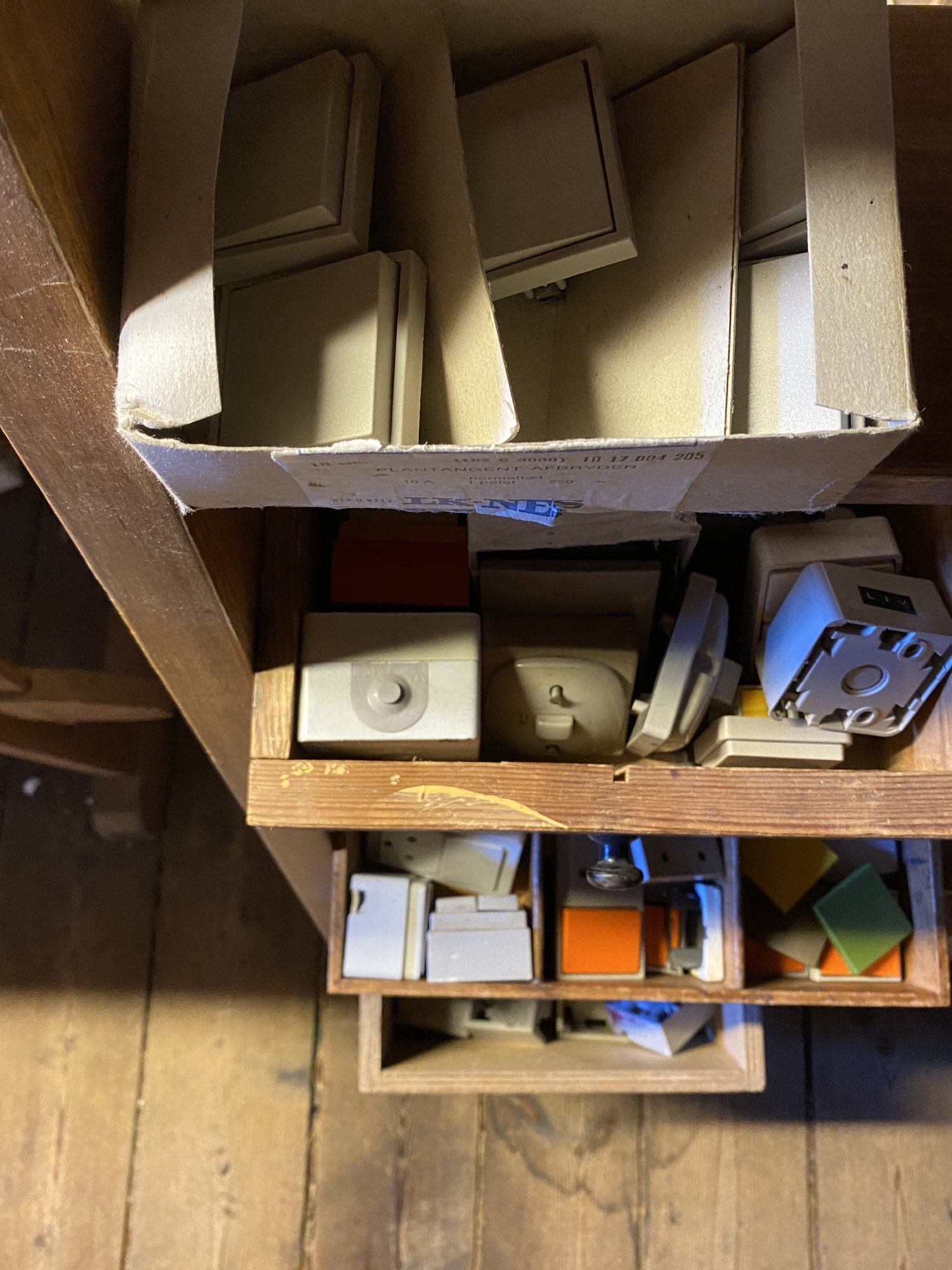
I bought the ladder cheaply from an old fish cutter, but it reeked so terribly of fish when I got it home.
I don’t know what I was thinking!
Fortunately, it is made of solid teak, so after a thorough wash, light sanding and varnishing, the odour was gone.
So long, and thanks for all the fish. :-)
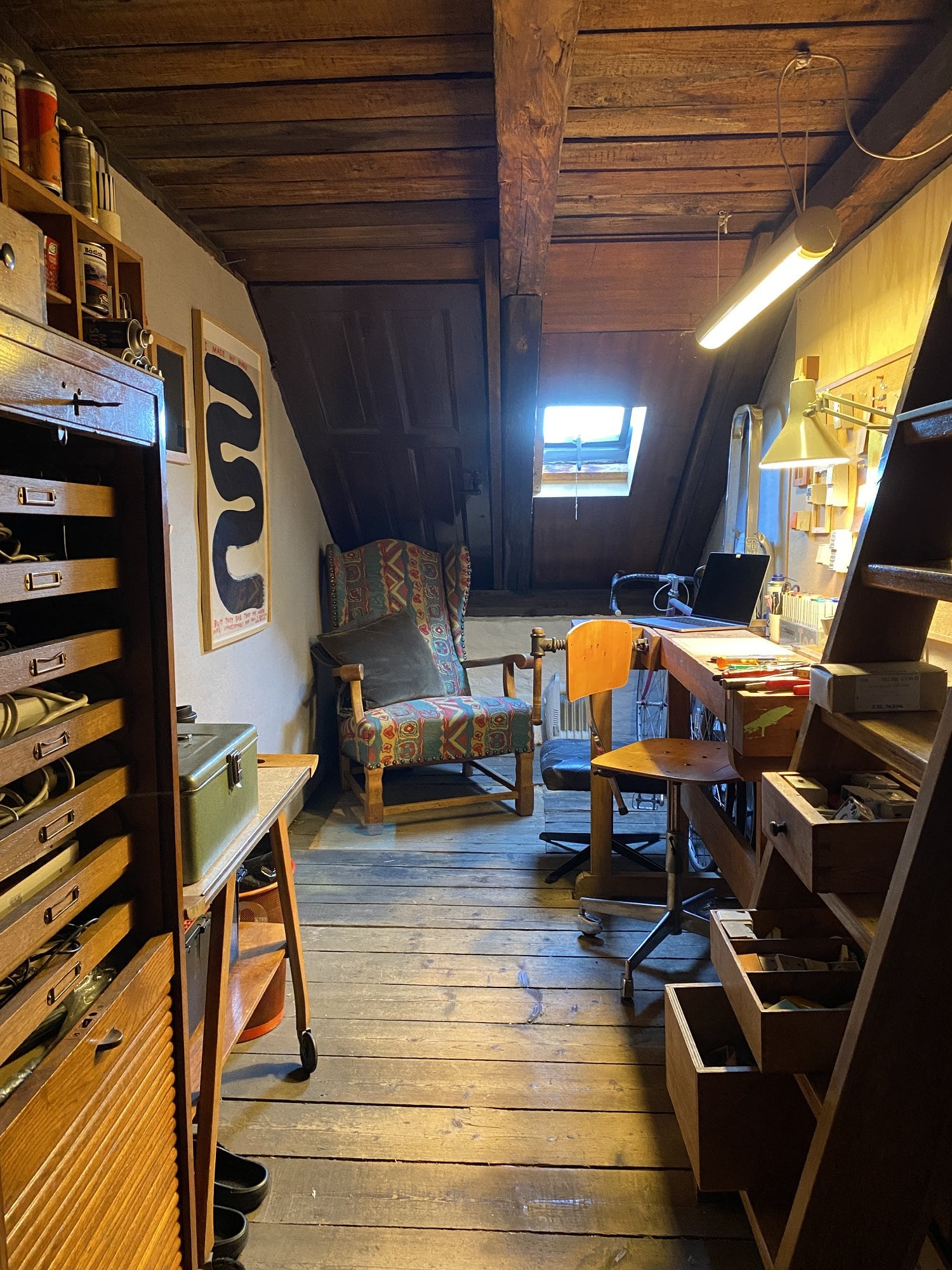
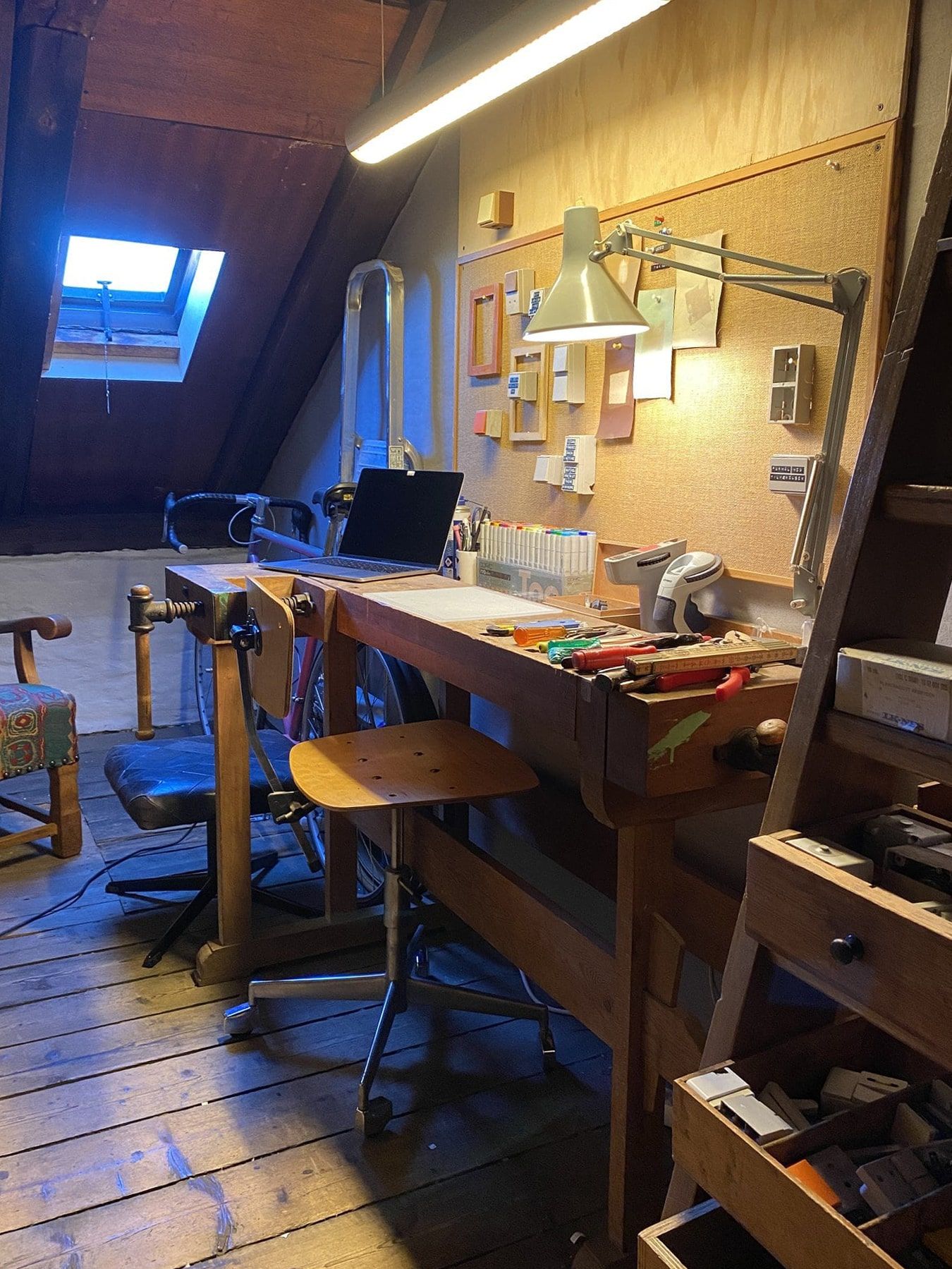
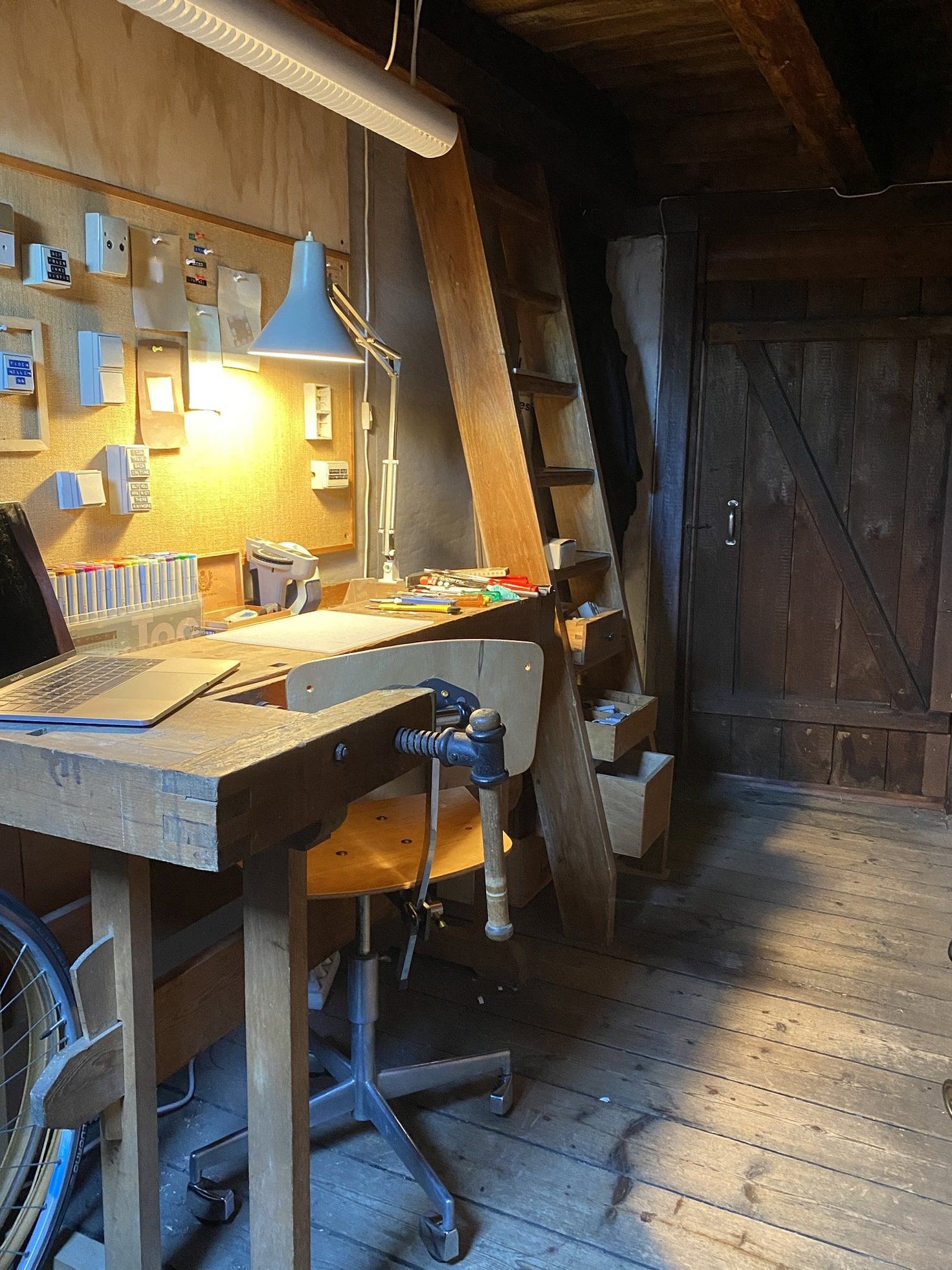
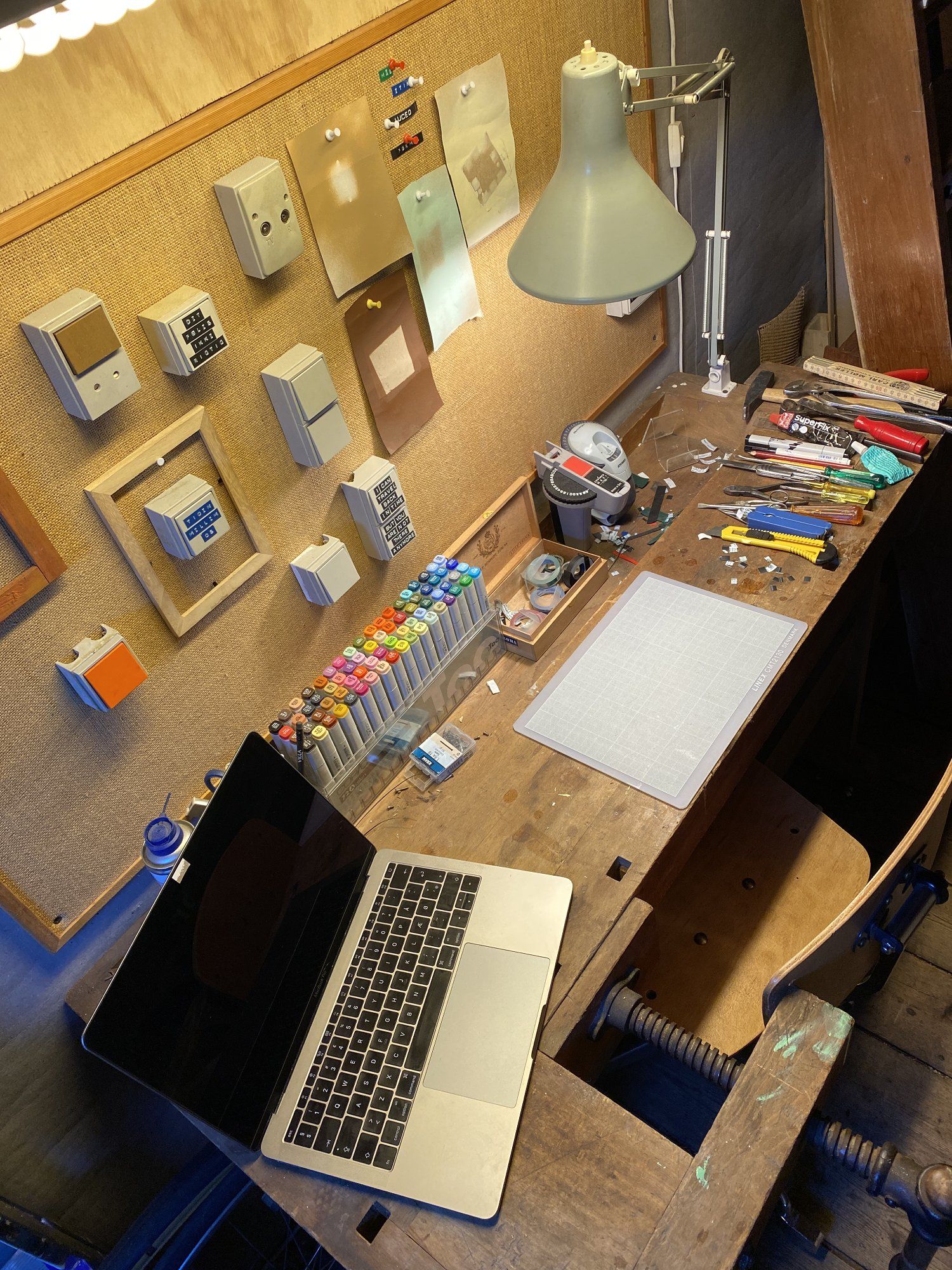
My MacBook Pro is from 2016, and it still runs flawlessly.
I got it as a thank you note for volunteering in the marketing department of The Human Library Organisation — a concept where real people are on loan to readers.
It encourages to “Unjudge Someone” and learn from people that have different stories.
To be able to get online, I use my iPhone as a modem or hotspot. But I’m not online that much when I am at my workspace.
The next thing I have to fix is a spray box with extraction. Right now, I’m either spraying outside through the window or up on the roof above the room.
Neither part is optimal when it is windy!
What’s your favourite item on your desk?
My favourite item on my desk is my vintage Dymo Maxi 1755 from the 1980s. I got it from my in-laws.
I use Dymo labels for my artwork, but this one has a slightly different and bolder embossed typeface than the newer machines.
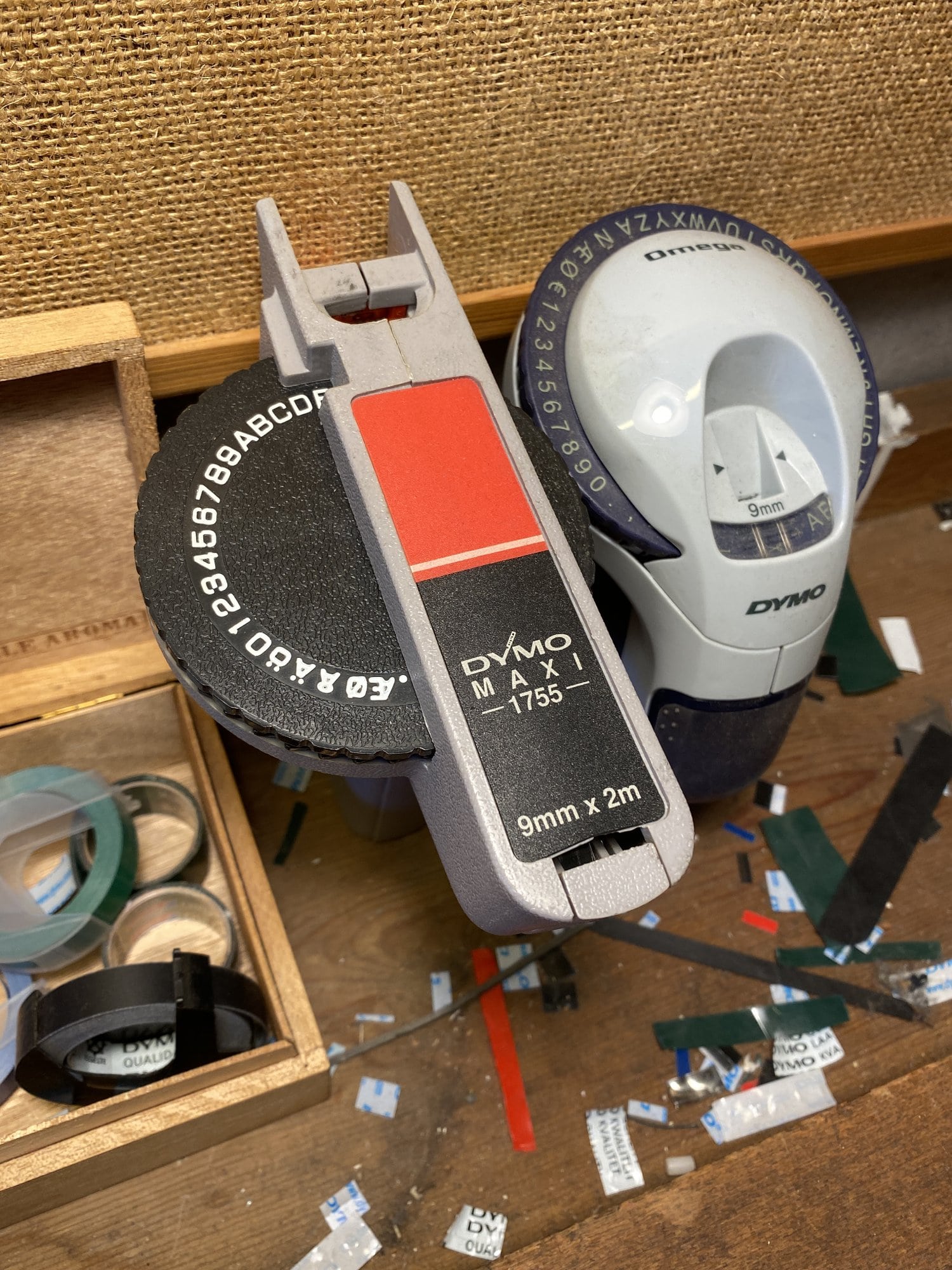
I like the retro look.
It fits well with the expression I am going for.
And the screwdrivers I got as a gift from my son, who found them in a thrift shop.
I think of him every time I use them.
He has moved in together with his girlfriend and some good friends in a shared house and is currently in the army, so there is a tiny bit of naturally occurring “empty nest syndrome” that I embrace and use for something creative.
What apps or tools do you use to get things done?
I use most of Adobe’s apps.
I bought an old dusty Adobe Creative Suite CS6, 2012 very cheaply to avoid the subscription hell with Adobe CC.
CS6 is still a very powerful package for most purposes.
Under my real name, I also write and illustrate books. Mostly within science fiction and philosophy.
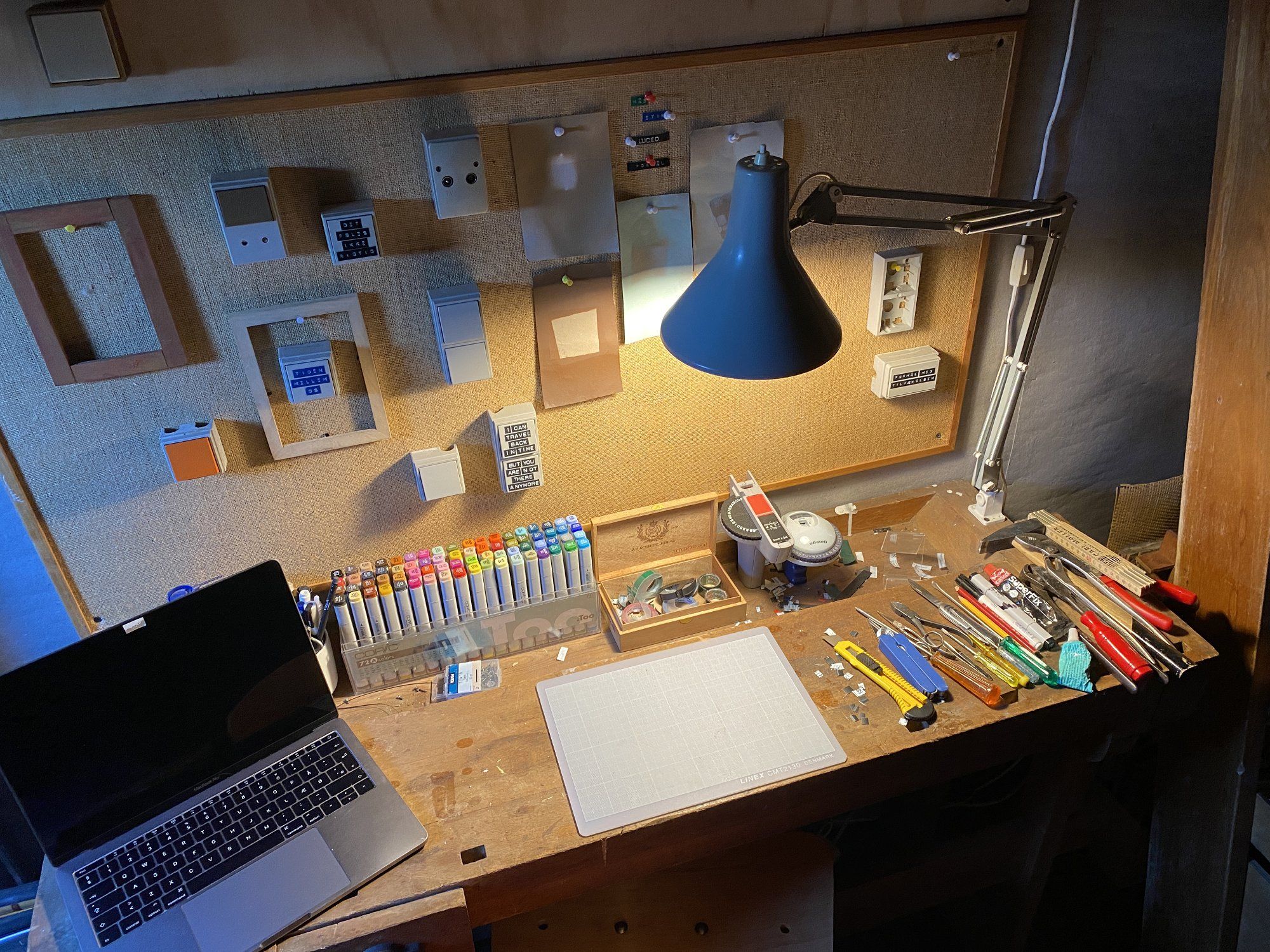
Here I mainly use Photoshop, Illustrator and Indesign, but also draw on an iPad with Procreate and still on paper with my refillable Copic markers.
I have had them for over ten years from an old advertising agency, and they still work perfectly.
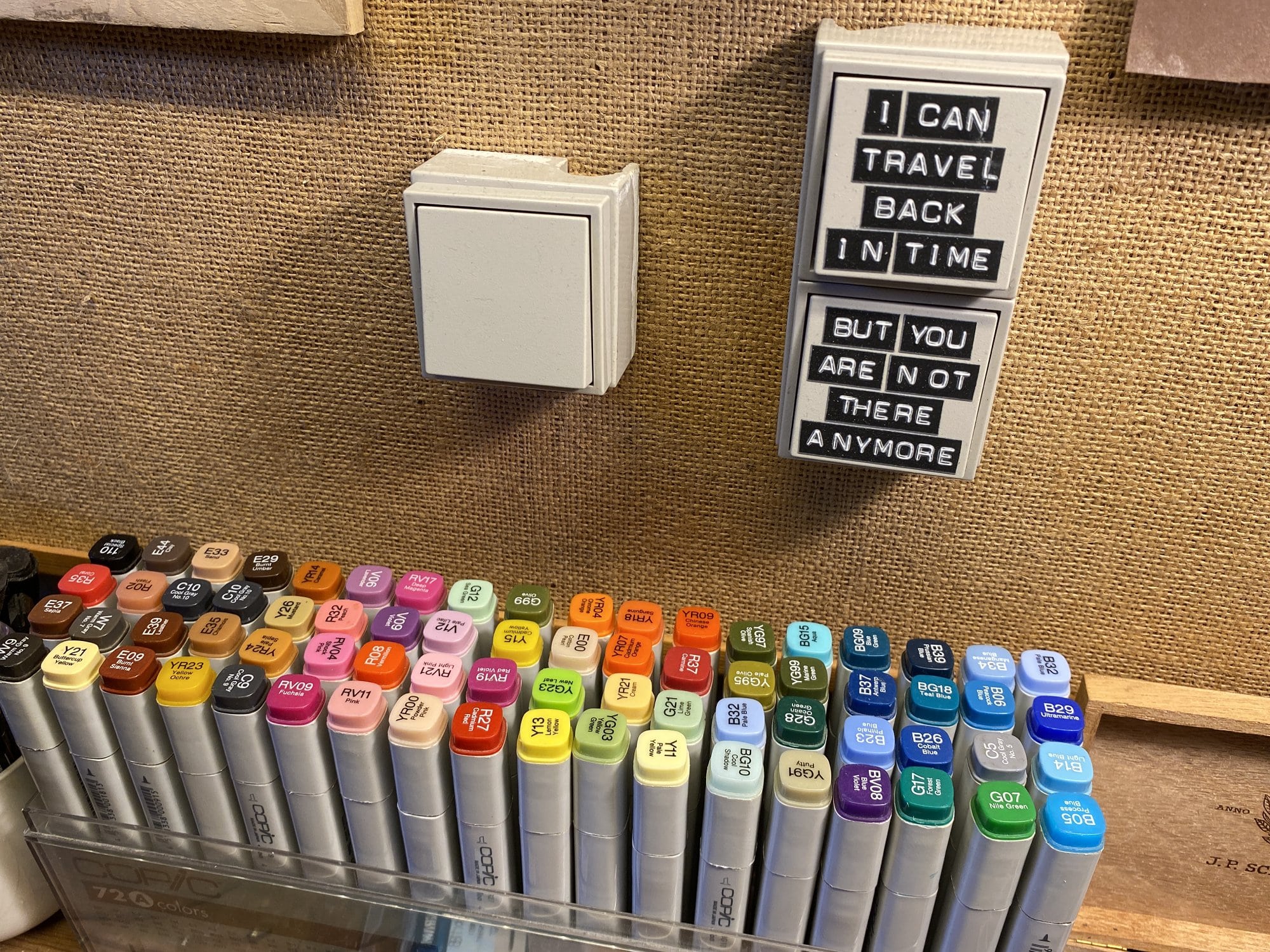
Oh yes, and the Microsoft Office Suite. You can rarely avoid it. I have an old Office for Mac, 2011 installed.
I also run a small independent publishing house with three friends, so Word, PowerPoint and even Excel need to be crunched at regular intervals.
I use Dropbox for file management.
And then I get so happy every time I use my hand tools. I usually buy my tools second-hand.
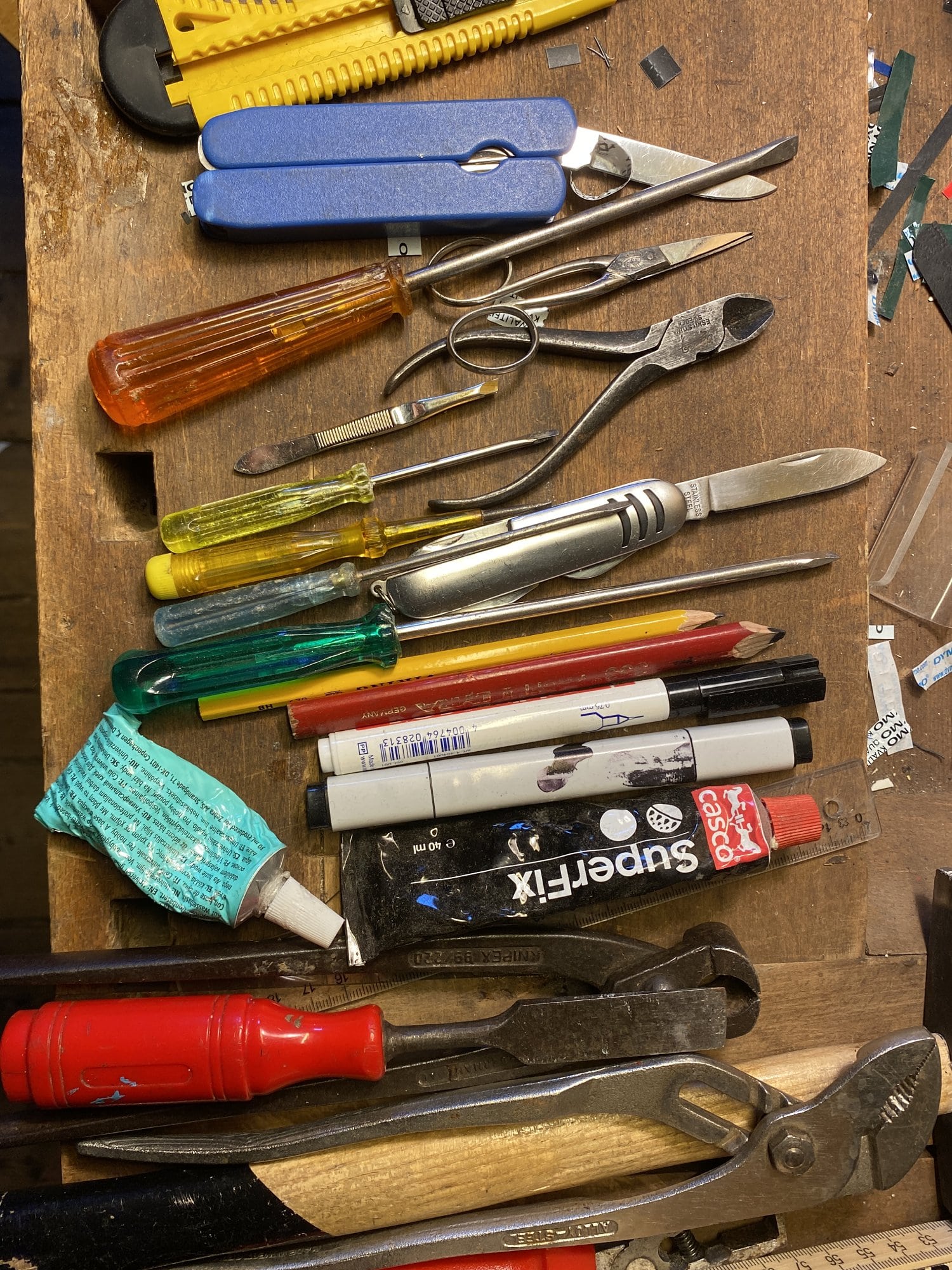
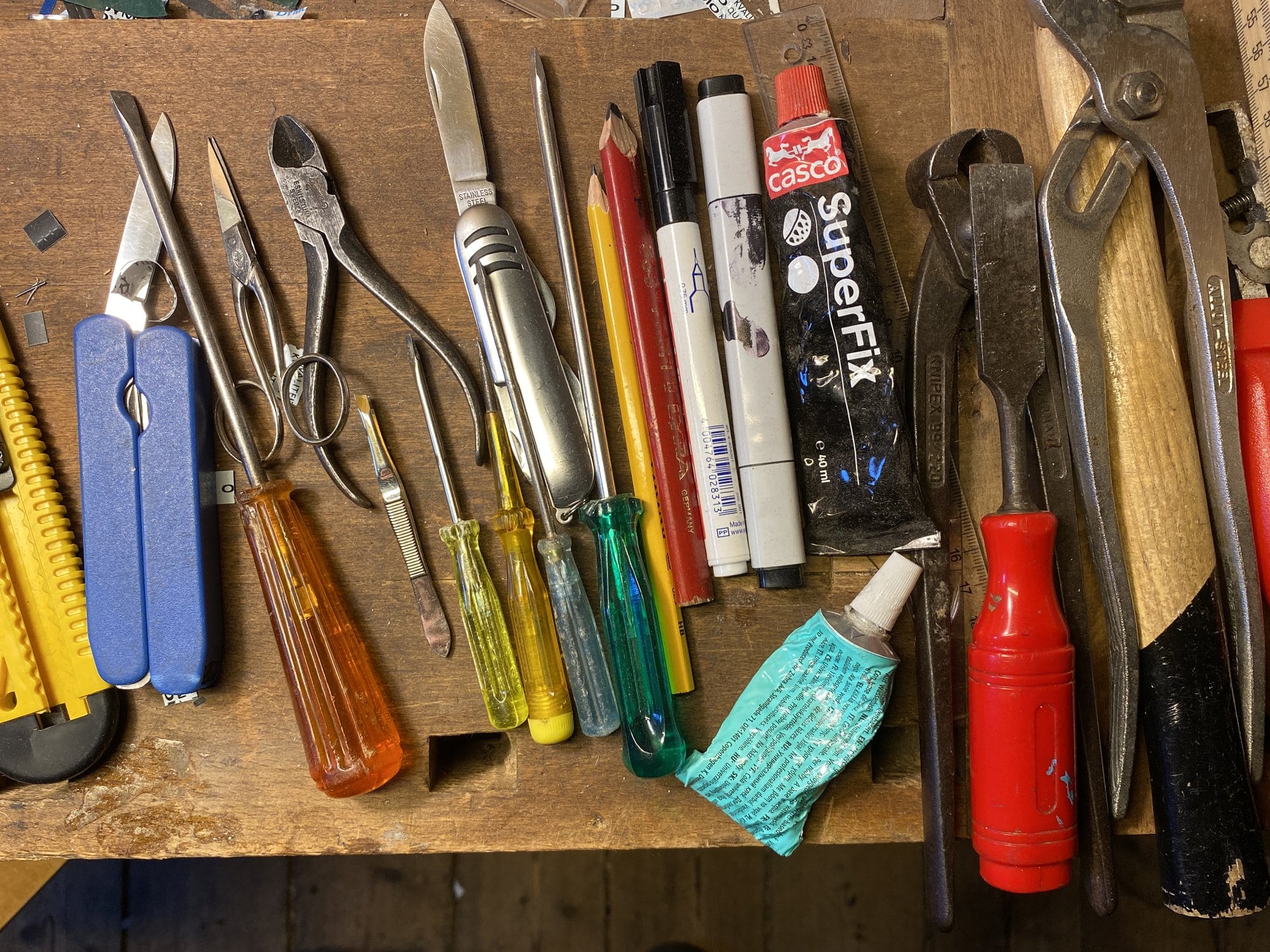
In addition to the often better quality, the worn and used surface of the tool somewhat helps to emphasise its function.
Old vintage tools just feel good in my hands. As if passing something on.
What books, blogs or podcasts recently caught your attention?
Right now, I am reading Unverfügbarkeit (The Uncontrollability of the World) by Hartmut Rosa.
A German sociologist who, based on a critical approach, works with acceleration and alienation in the high-speed society.
He says, among other things, that “A world that is fully known, in which everything has been planned and mastered, would be a dead world. Our lives are played out on the border between what we can control and that which lies outside our control.”
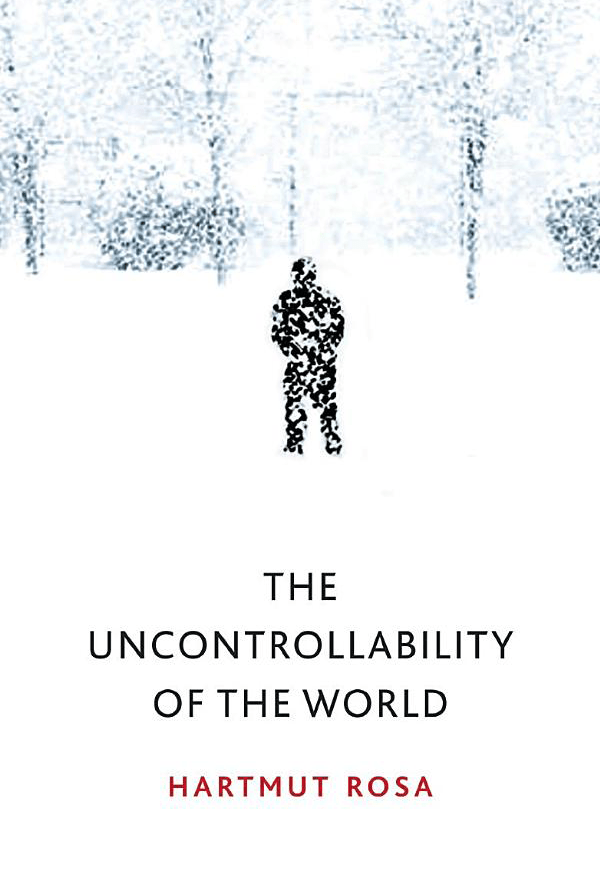
The Uncontrollability of the World
“A rare combination of erudition, theoretical sophistication and philosophical inventiveness, this magnificent book provides a starting point for any forensic exploration of the cultural dilemmas and political contradictions of our times.”
Achille Mbembe, author of Necropolitics
When I sometimes think too much about my own (and others’) contribution to life, my daughter told me about the concept of “slice of life”.
The term covers a relatively realistic rendering of everyday life in art and entertainment. I try to remember that. She recommended the 1999 film My Neighbors the Yamadas.
And then my older brother, a Professor of Human Geography, is writing a geographical novel about our wild, rural childhood where we grew up in a juxtaposition of classic literature and homemade demolition derbies in old cars from our father’s auto shop.
I am very much looking forward to it being published.
AI development is always exciting to follow.
ChatGPT is an interesting tool. And I am looking forward to delving more into Midjourney, DALL-E, Stable Diffusion and the like for my next illustration/book project.
Otherwise, I try to stay out of news and podcasts etc. I get a tiny bit angry sometimes.
Especially because I can sense that this is the intention with it.
Any tips for other makers who want to improve their workspaces?
After many years of everything from windowsill desks and the freelance life on hard barstools in coffee shops and boring & expensive office hotels to humming spacious offices, Instagram-friendly startups in raw factory buildings, and the most excellent high-end architect-designed agencies with views of the city and harbour, my best advice is to listen to your inner voice (child) when you have to establish a home office.
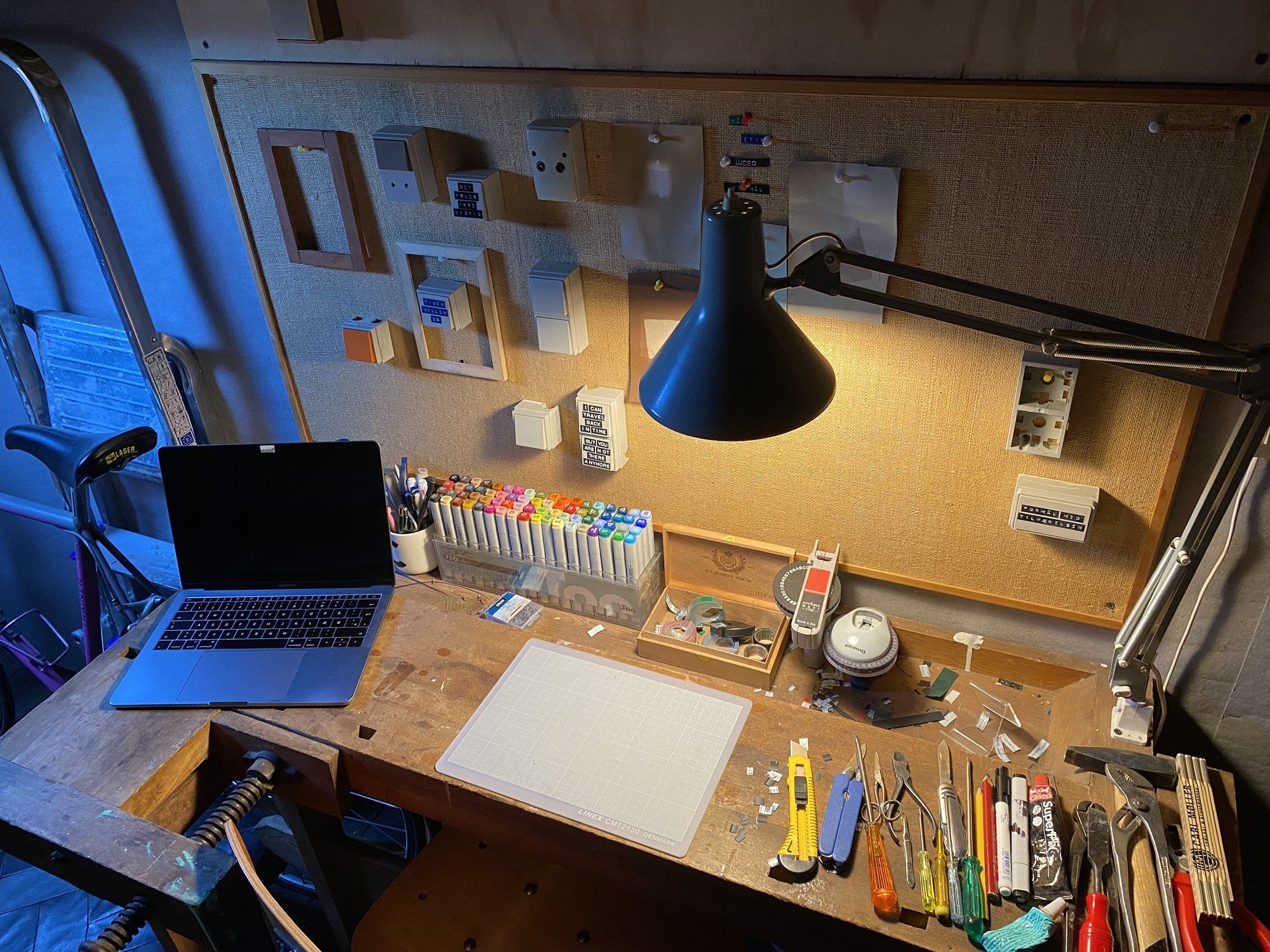
When did the best ideas or solutions occur?
Where are you most productive?
What environment and what things make you really happy?
And not least safe! And then cultivate the intimacy and feel free to exaggerate it to ensure extra padding.
Forget the social norms and the real world for a moment when you imagine your perfect desk setup.
A home office can be many things. And it doesn’t necessarily have to be at home-home.
I have an acquaintance who uses his boat as an office and another who even sits in a greenhouse all year round, even though they have the space for a fine home office.
The location of the home office can be just as important as the interior design and setup.
How about an old abandoned building like you see in movies? That would be great.
You have to play with the idea of location.
What does your typical day look like?
Several years ago, I became a stay-at-home dad when my wife’s career really took off.
At the same time, we downsized our overly materialistic everyday life we had built up (let ourselves be dazzled by) through the economic prosperity of the 2000s.
Houses, cars and overconsumption.
It freed up a lot of time for the children, us and life in general.
A calmness and deeper creativity fell upon us that we had not experienced before.
I’m at the workshop for a few hours, after which I go out on a bicycle to set up artwork and to spot new possible locations.
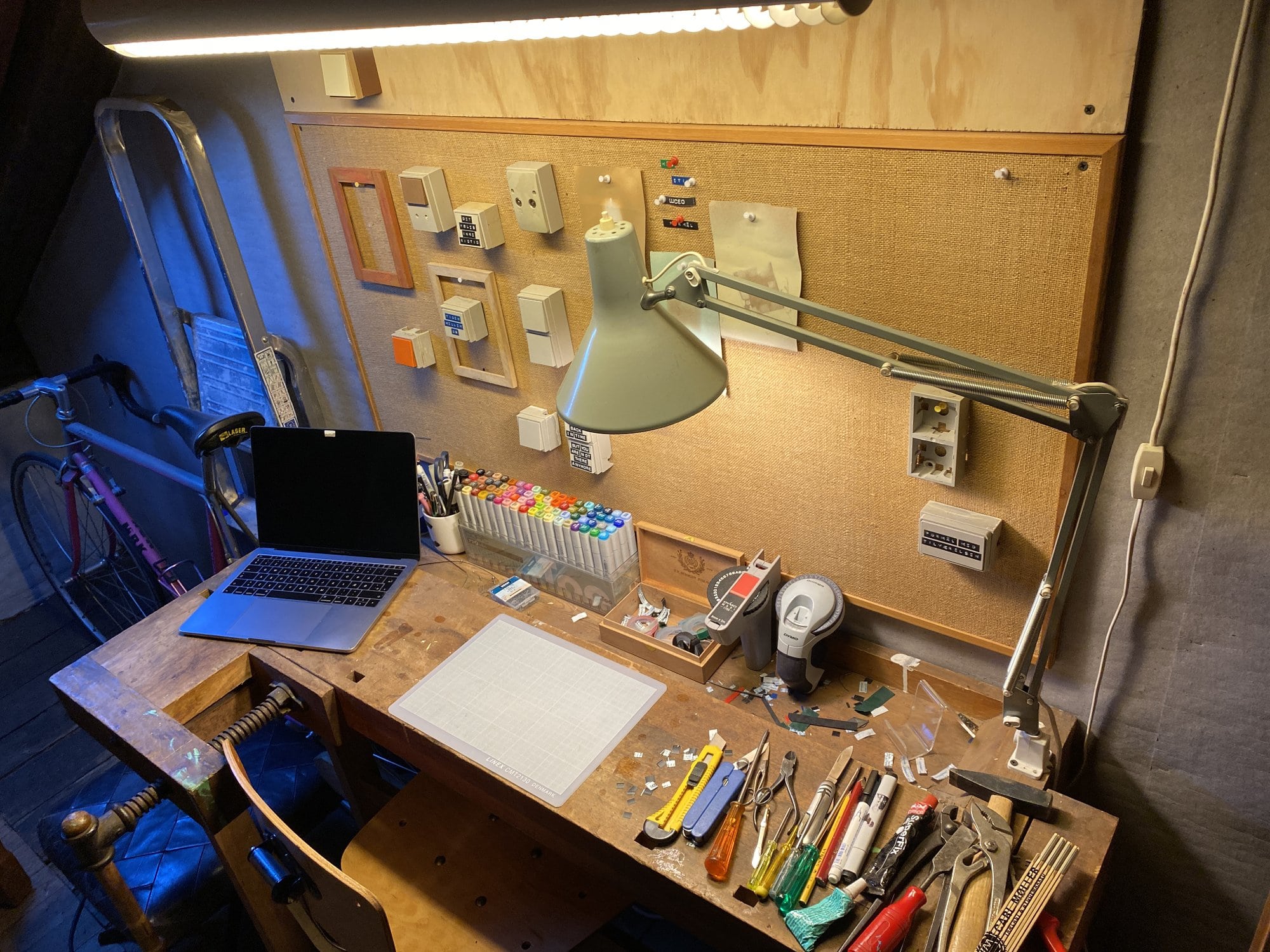
Then back again and continue working with pieces for specific places I have discovered.
When I write, I sometimes choose to set out in the harbour.
Here I have been allowed to become a member of an old sailing club, even though I have no boat.
I am the first landlubber member in their 125-year history.
Here I sit in an old creaking wooden shed with a pot of coffee in tranquillity and freedom from disturbance.
Then my daughter often comes home from high school, and we enjoy snacks for, e.g. homework, The Amazing World of Gumball, documentaries or reality television until dinner.

I never work in the evenings anymore.
I did that a lot when the children were little, and I was a partner in a large agency.
I can’t, and I don’t want to anymore.
Our evenings are wonderful. It is where we meet and have each other before we go to sleep in the ever-fleeting existence.
Your tips for working from home?
My biggest enemy is still procrastination.
You have to identify the reason for your procrastination and try to turn it into something creative or just squash it at first sight.
The best antidote is dates, hours, points in time and especially deadlines if you have to get something done.
And then you have to make sure you keep in touch with the outside world.
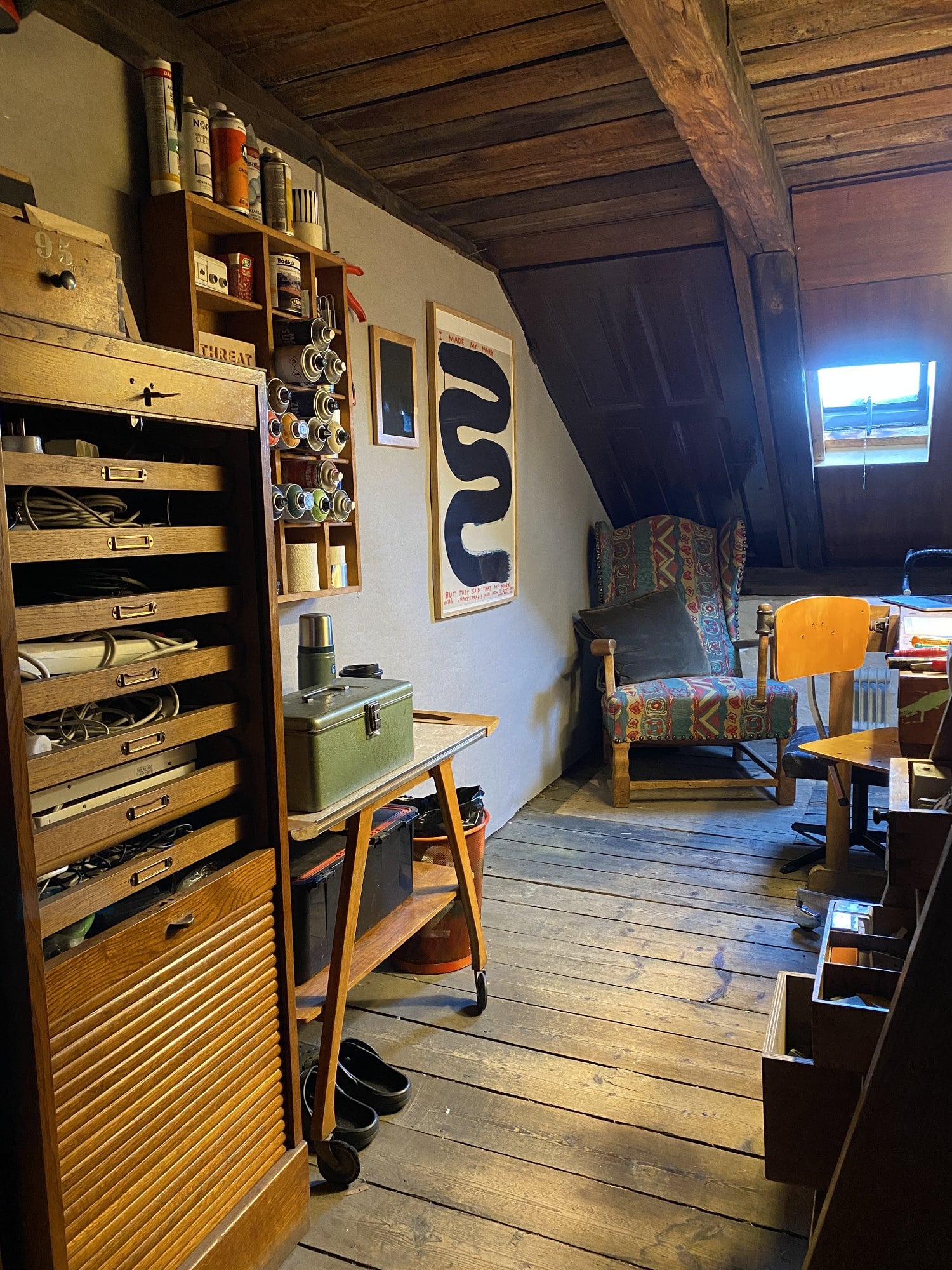
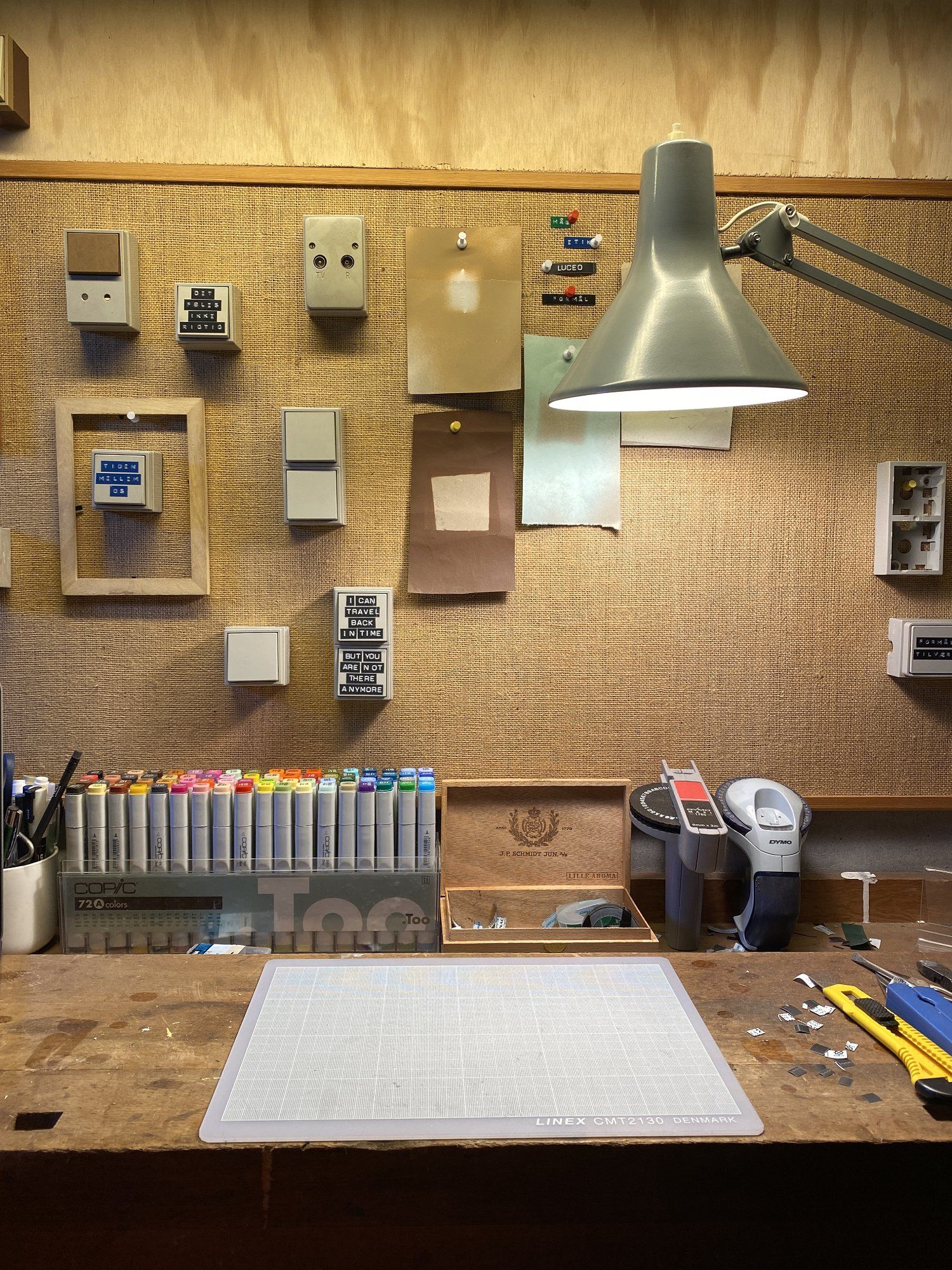
For example, regular check-ins with friends, colleagues, business partners, customers and others are important so that one’s home office does not just end up in a floating ego bubble.
You have to remember that even if you sit alone and work, you are still part of a larger community that needs you.
And that is regardless of whether you work with design, programming, a time-travelling device, street art or something completely different.
And very importantly, you are free to place, build and decorate your home office completely wild and crazy or just take a quick nap in a good old chair. :-)
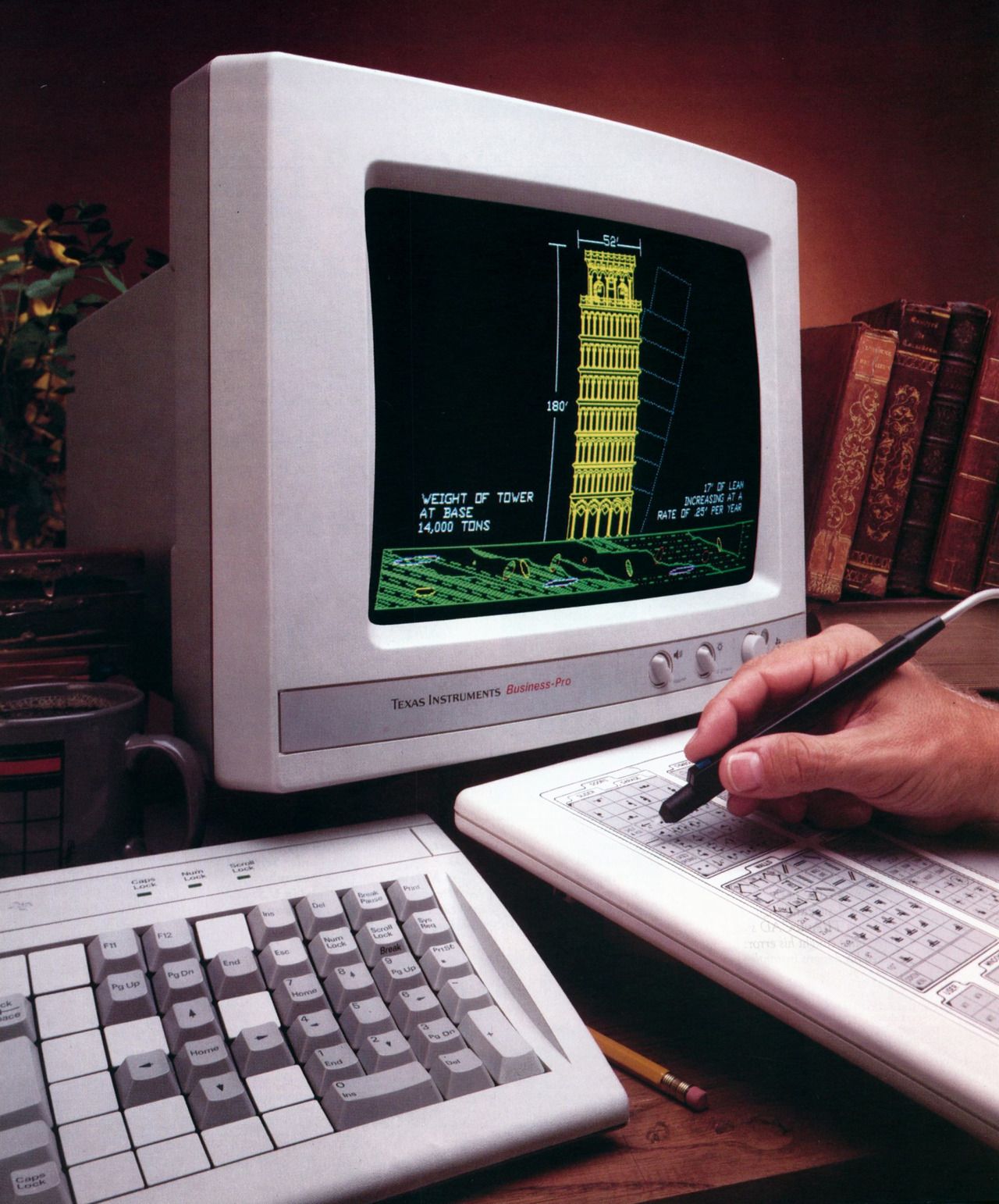
We’re a reader-supported publication. This article might contain affiliate links. It means we may receive a commission if you click a link and buy a product that our maker has recommended. The interview was done independently.








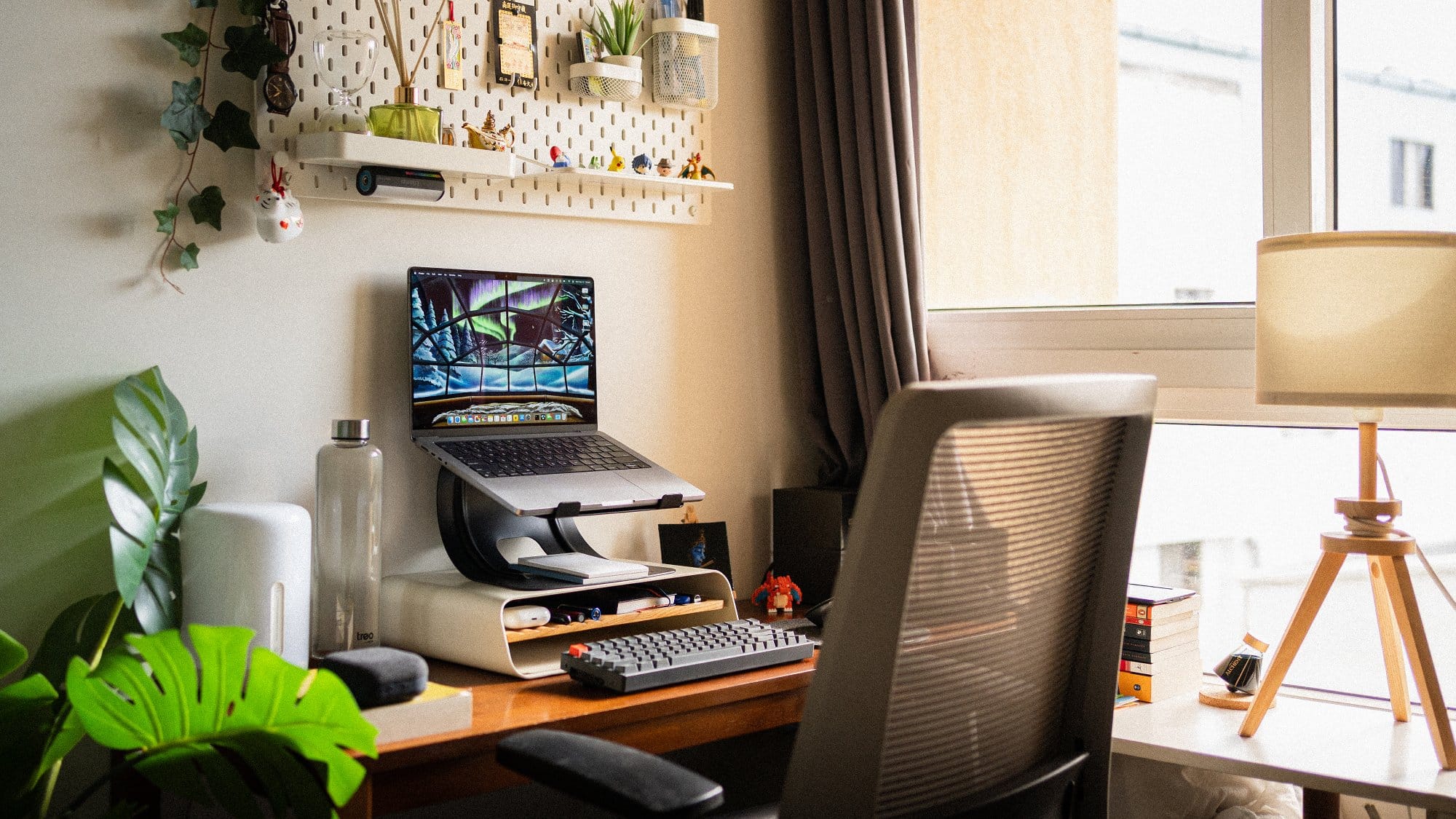
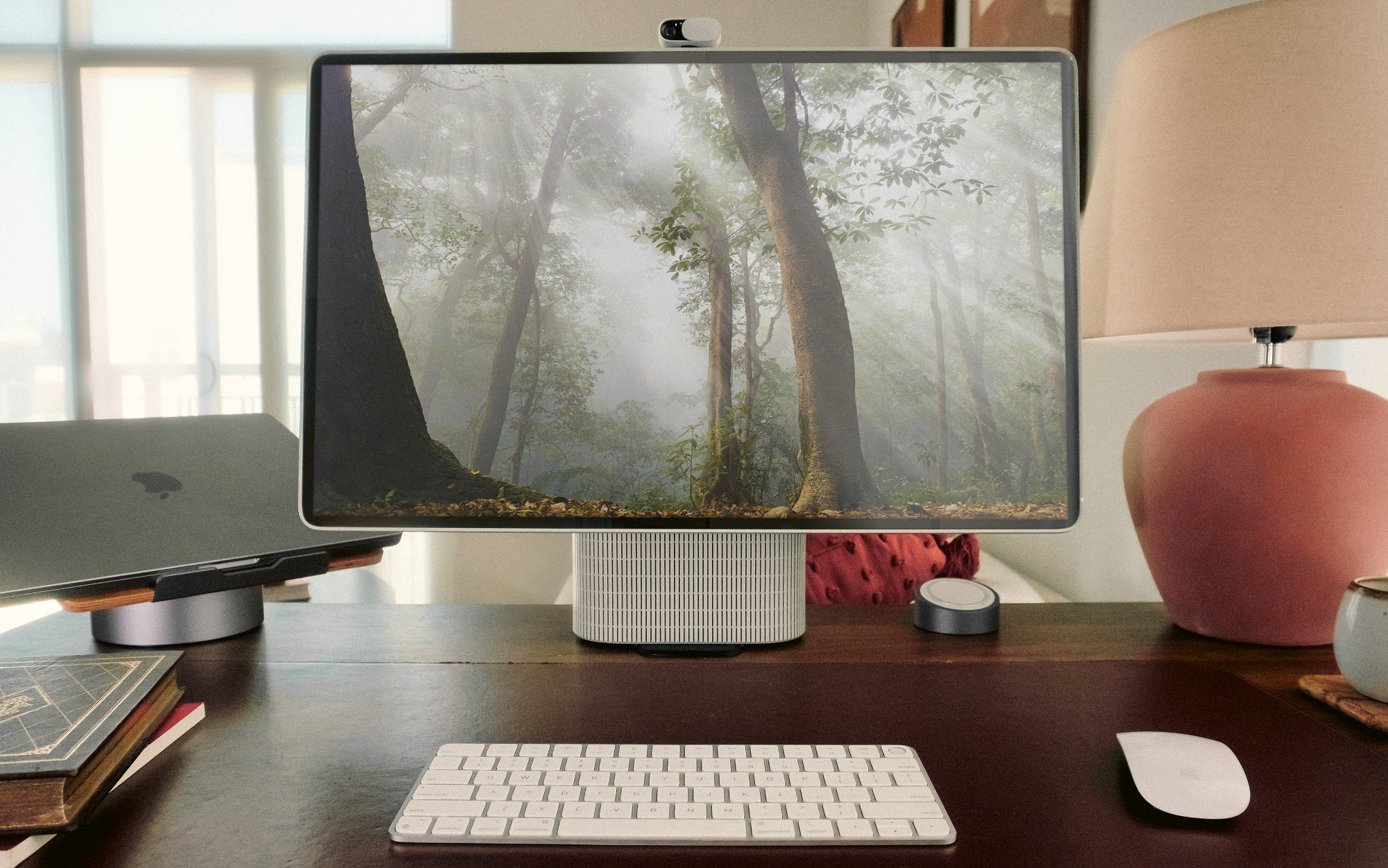
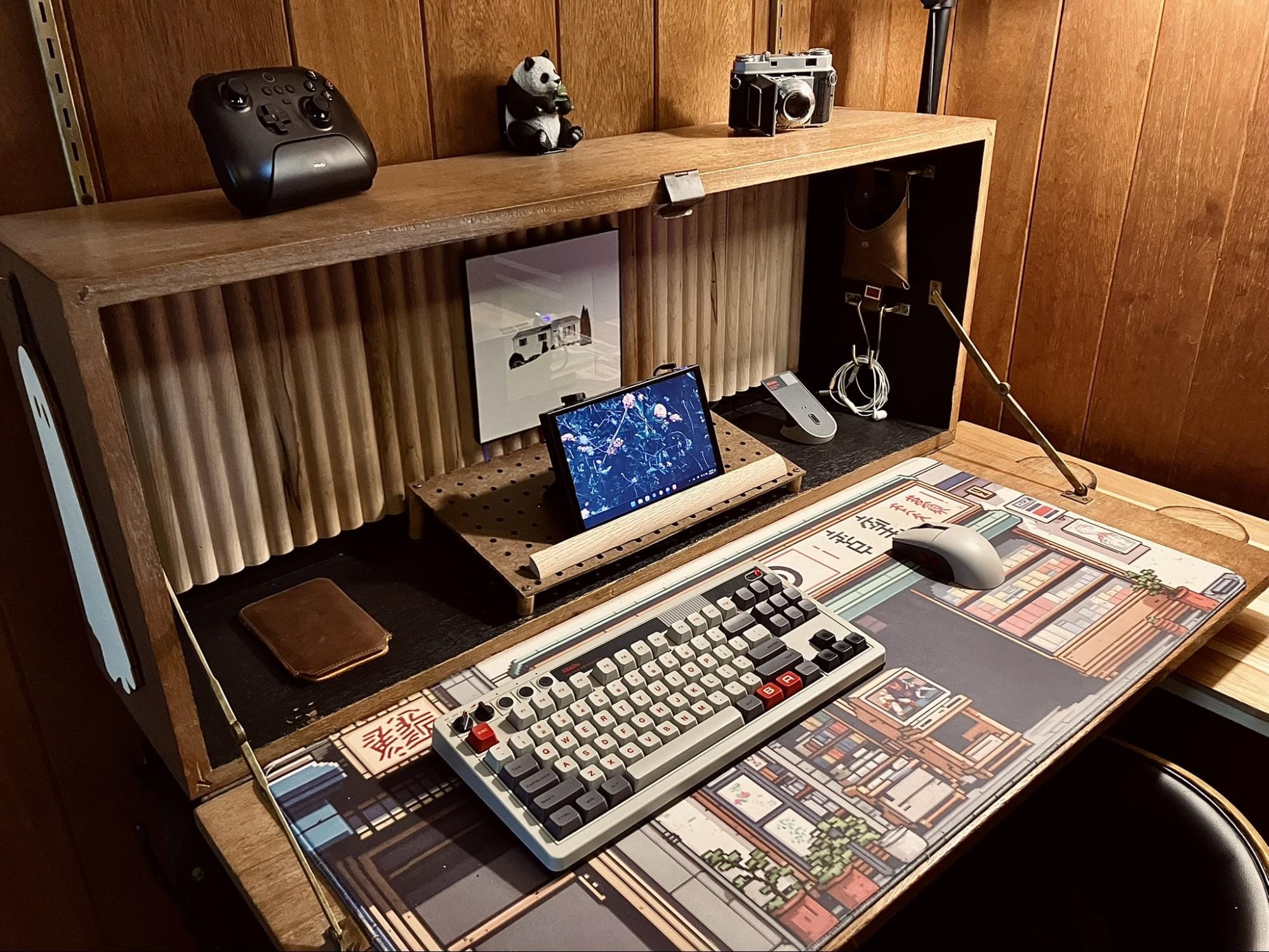



Discussion